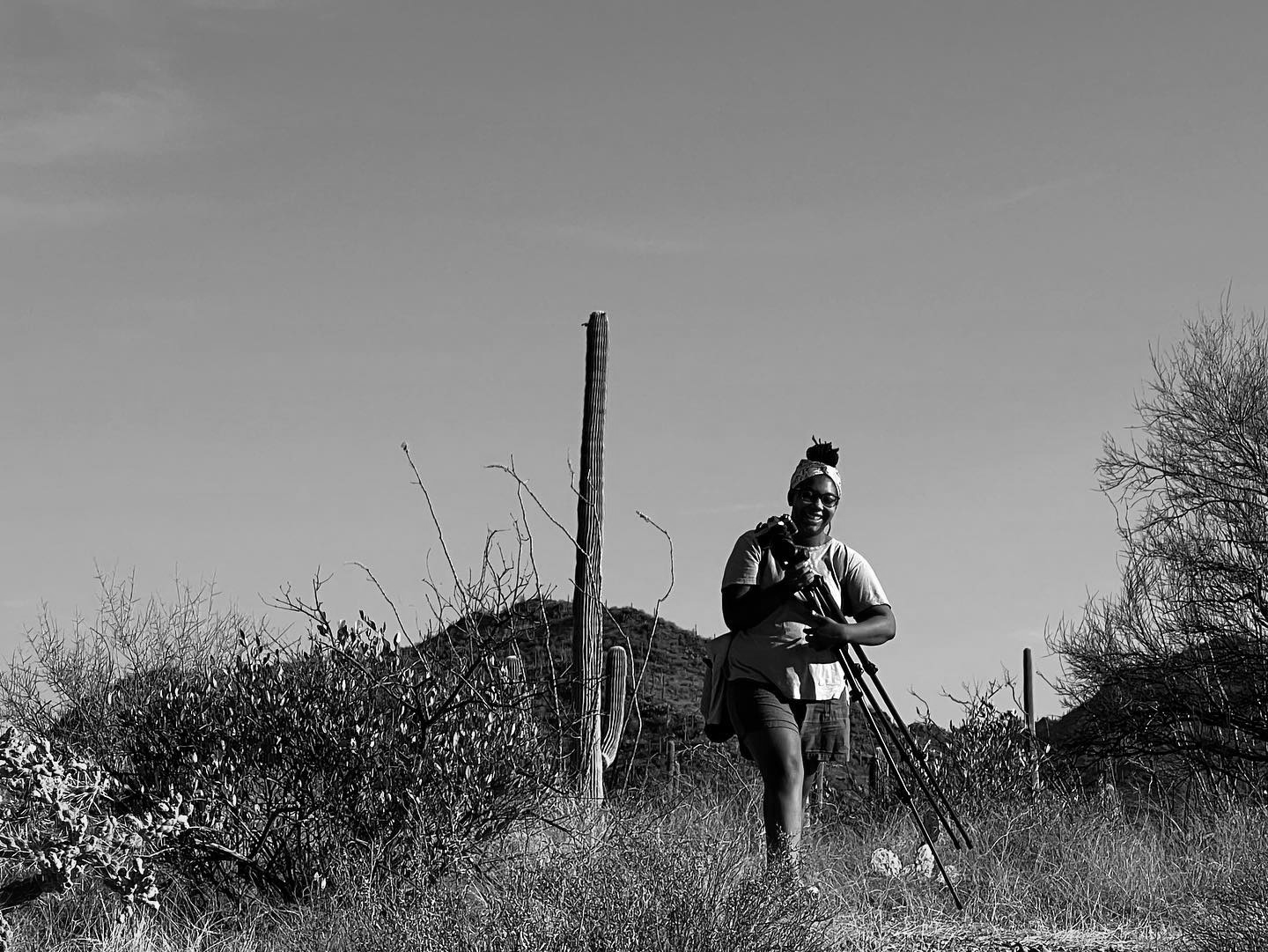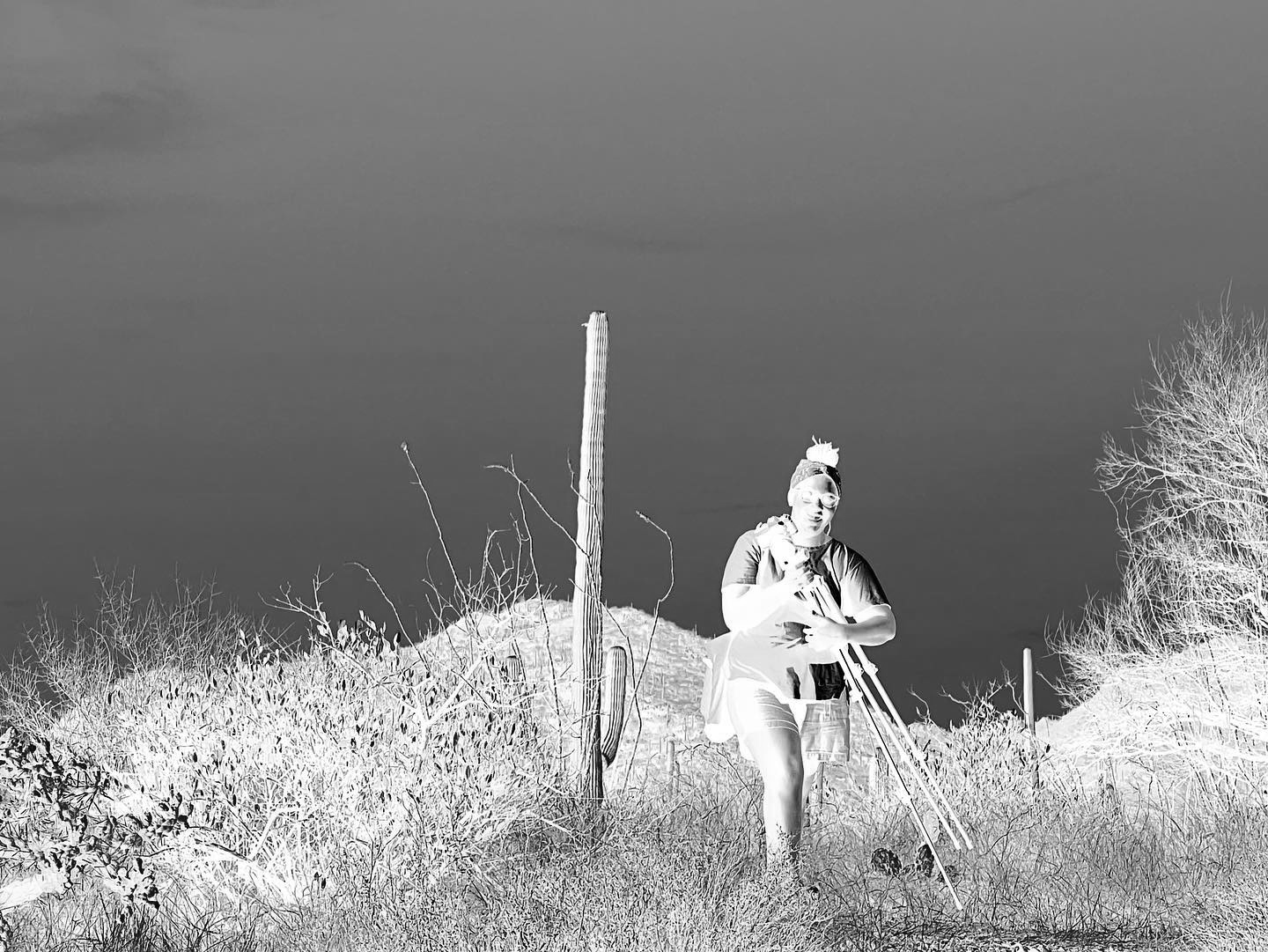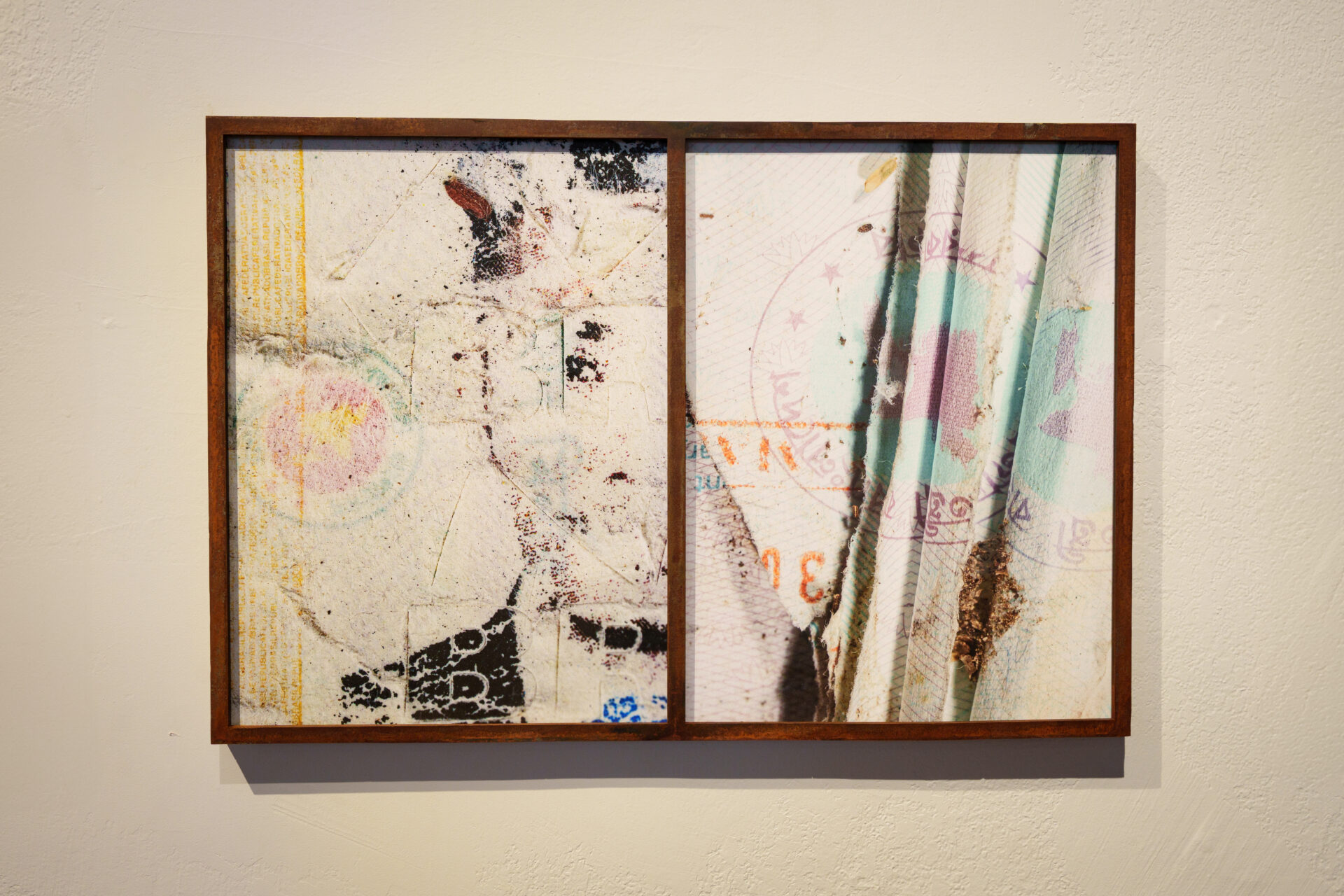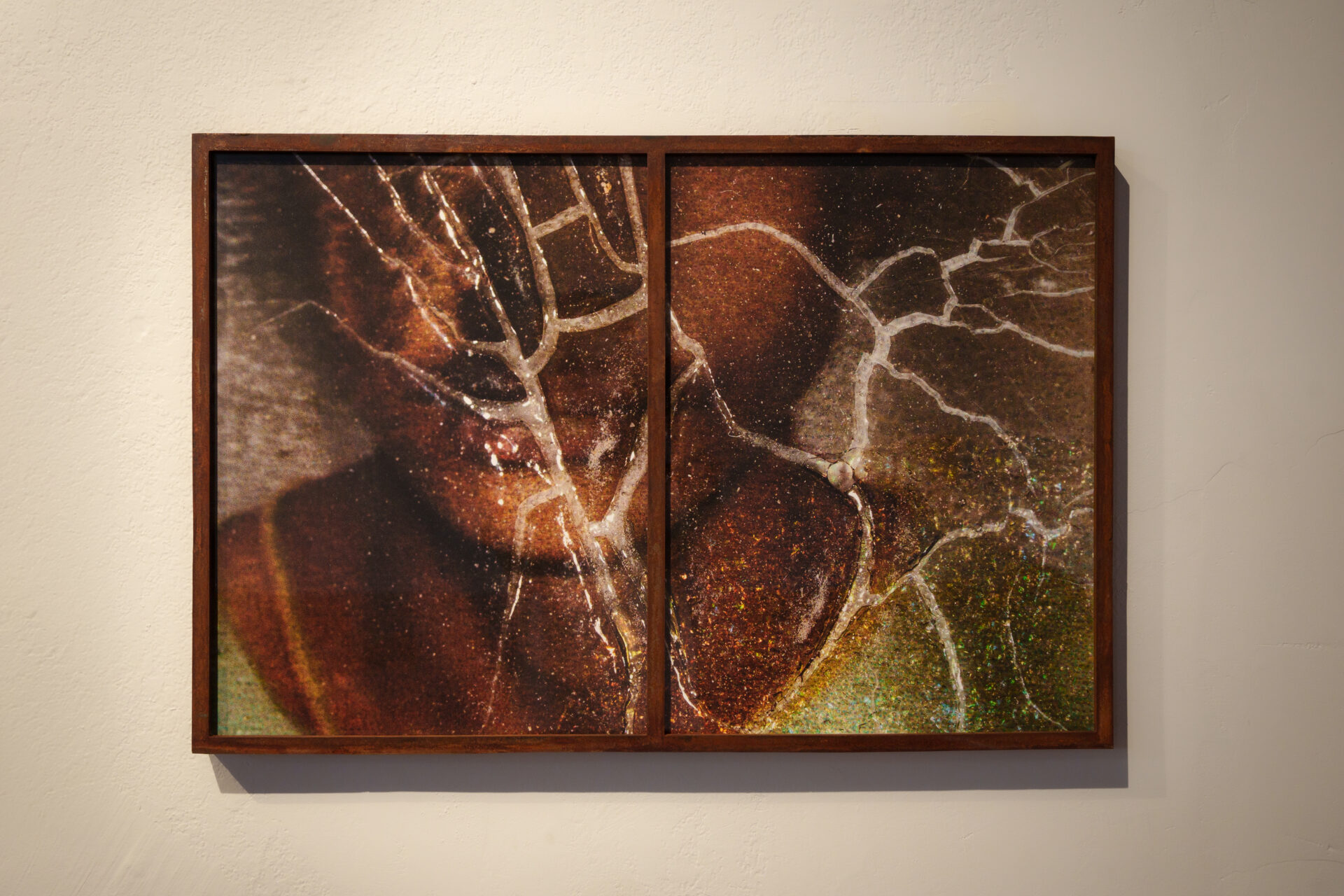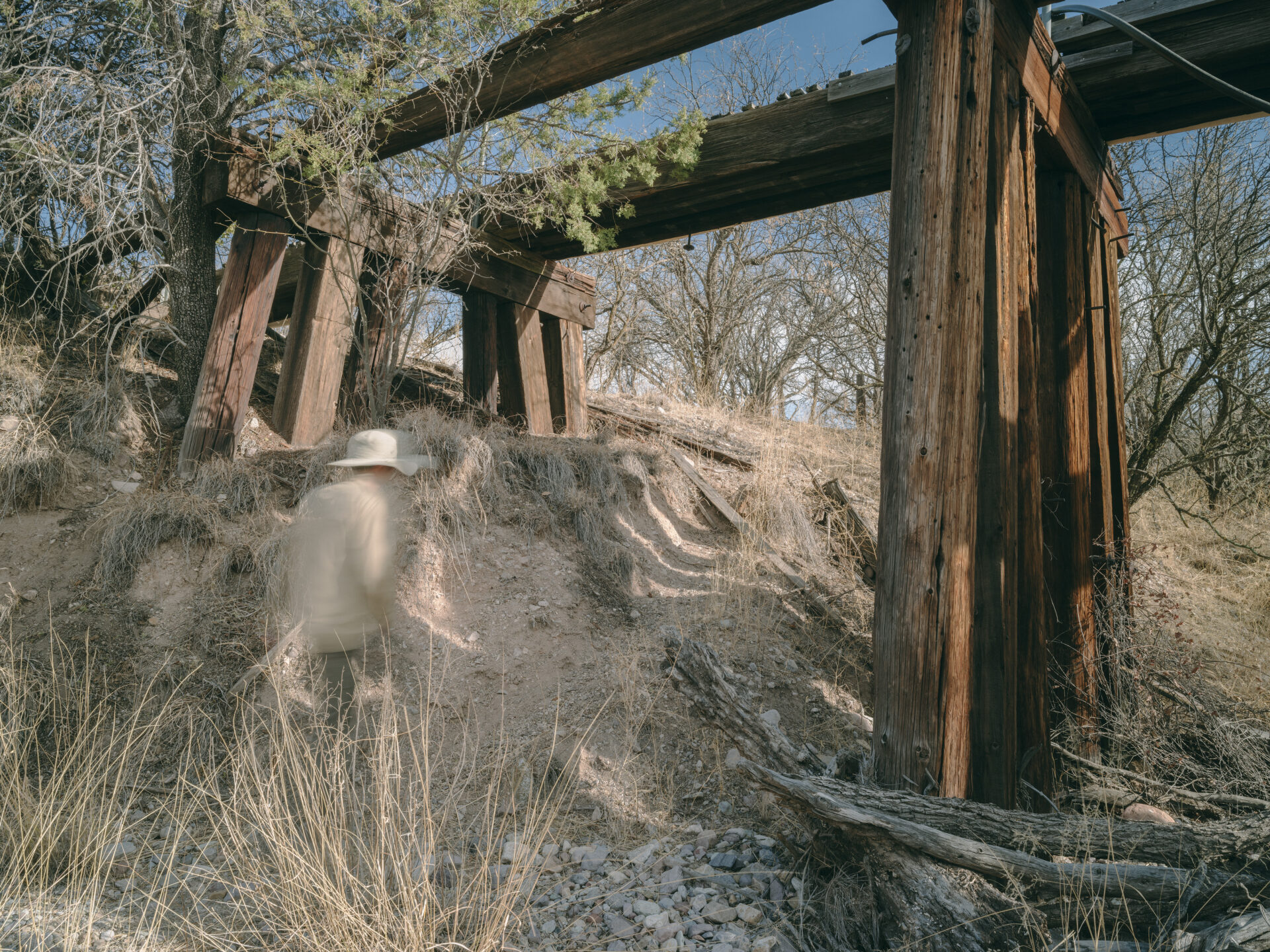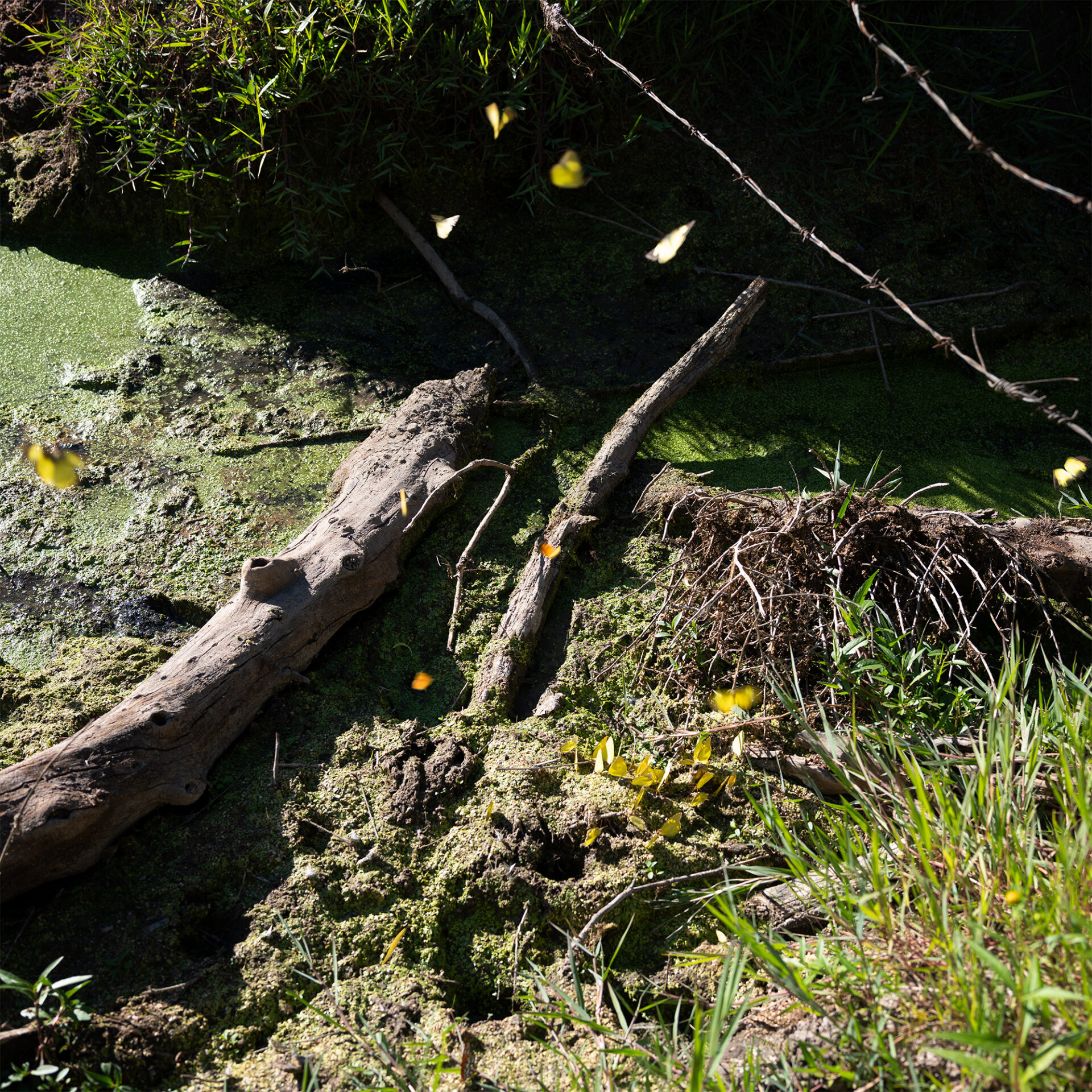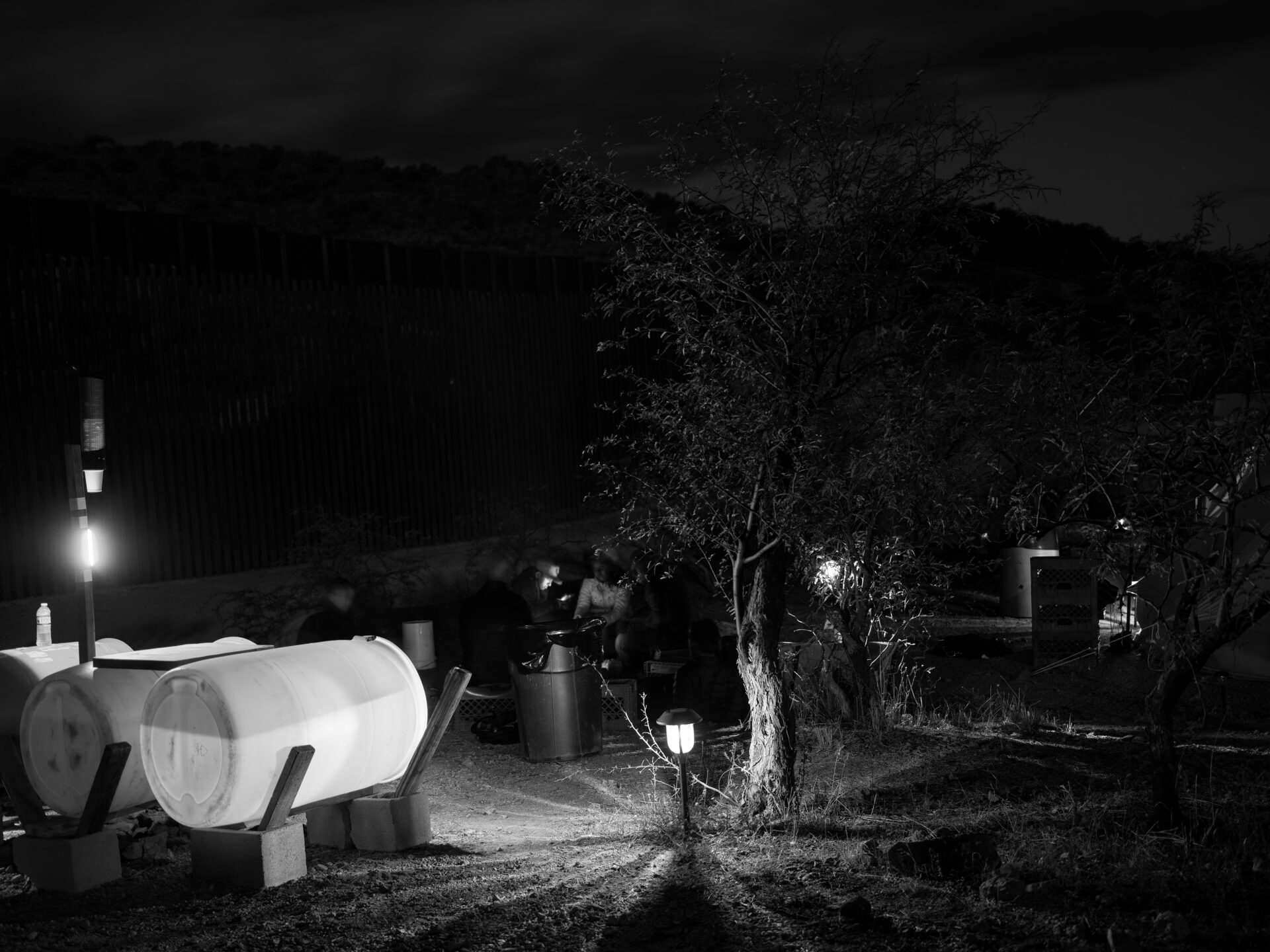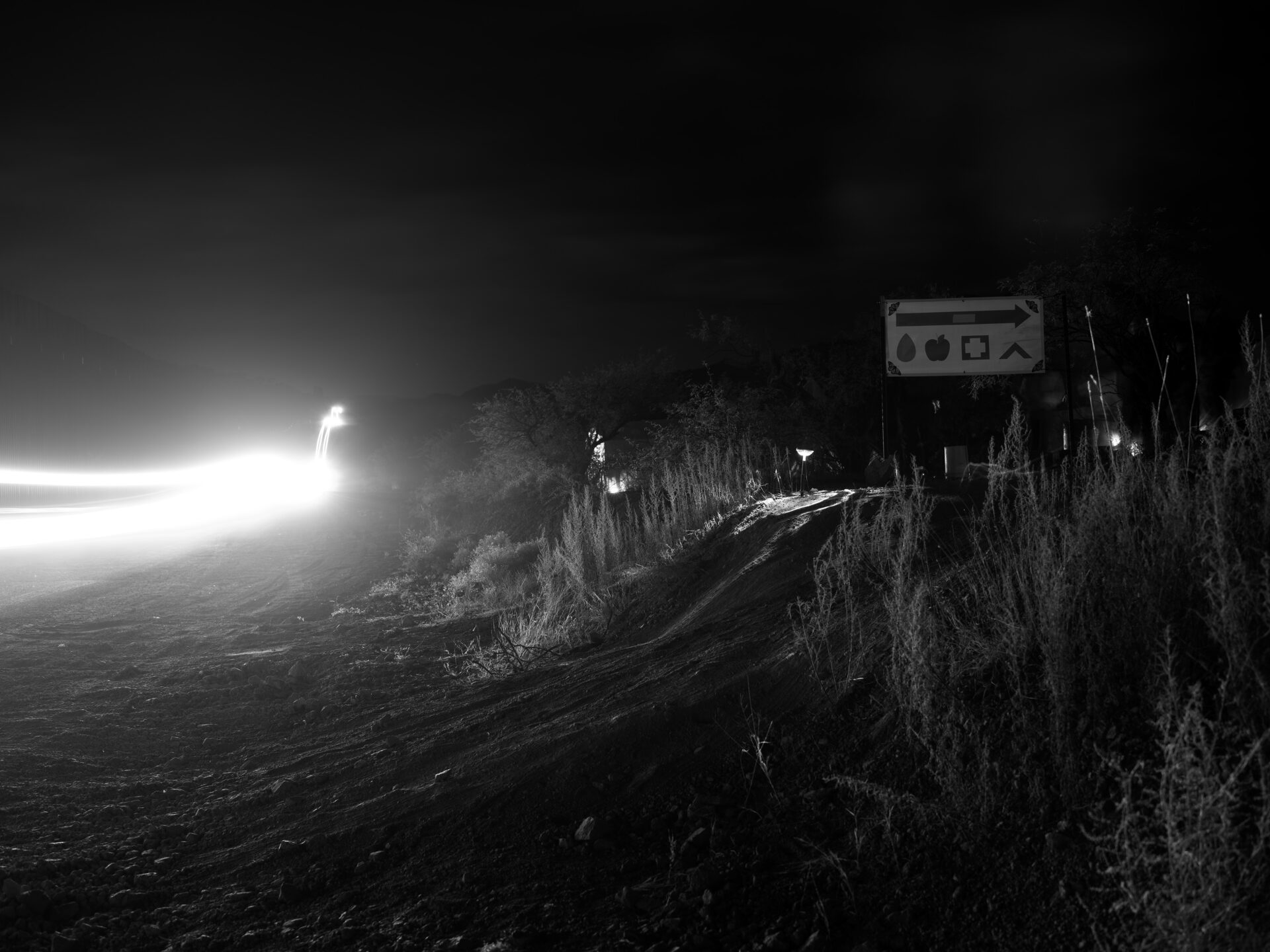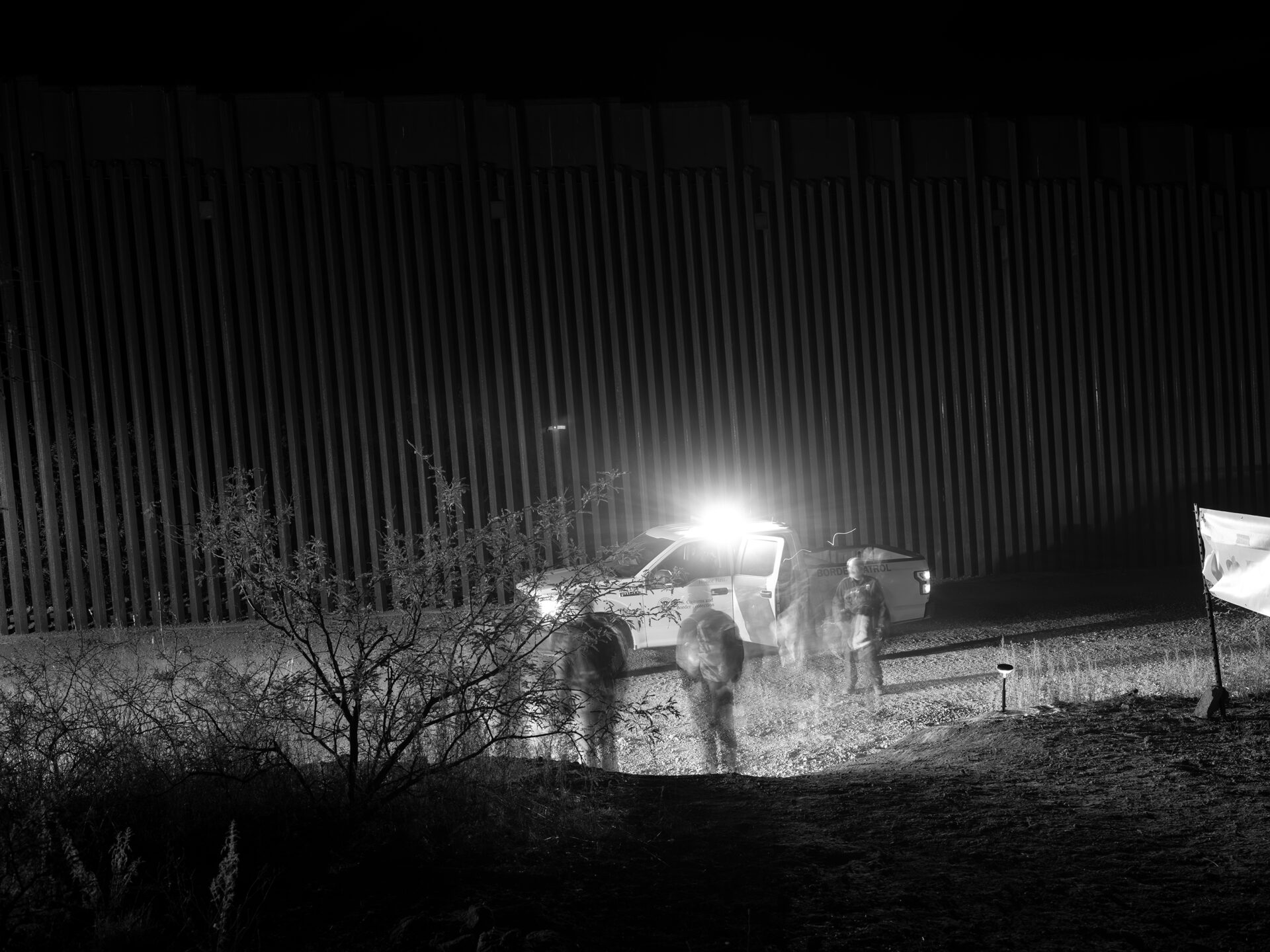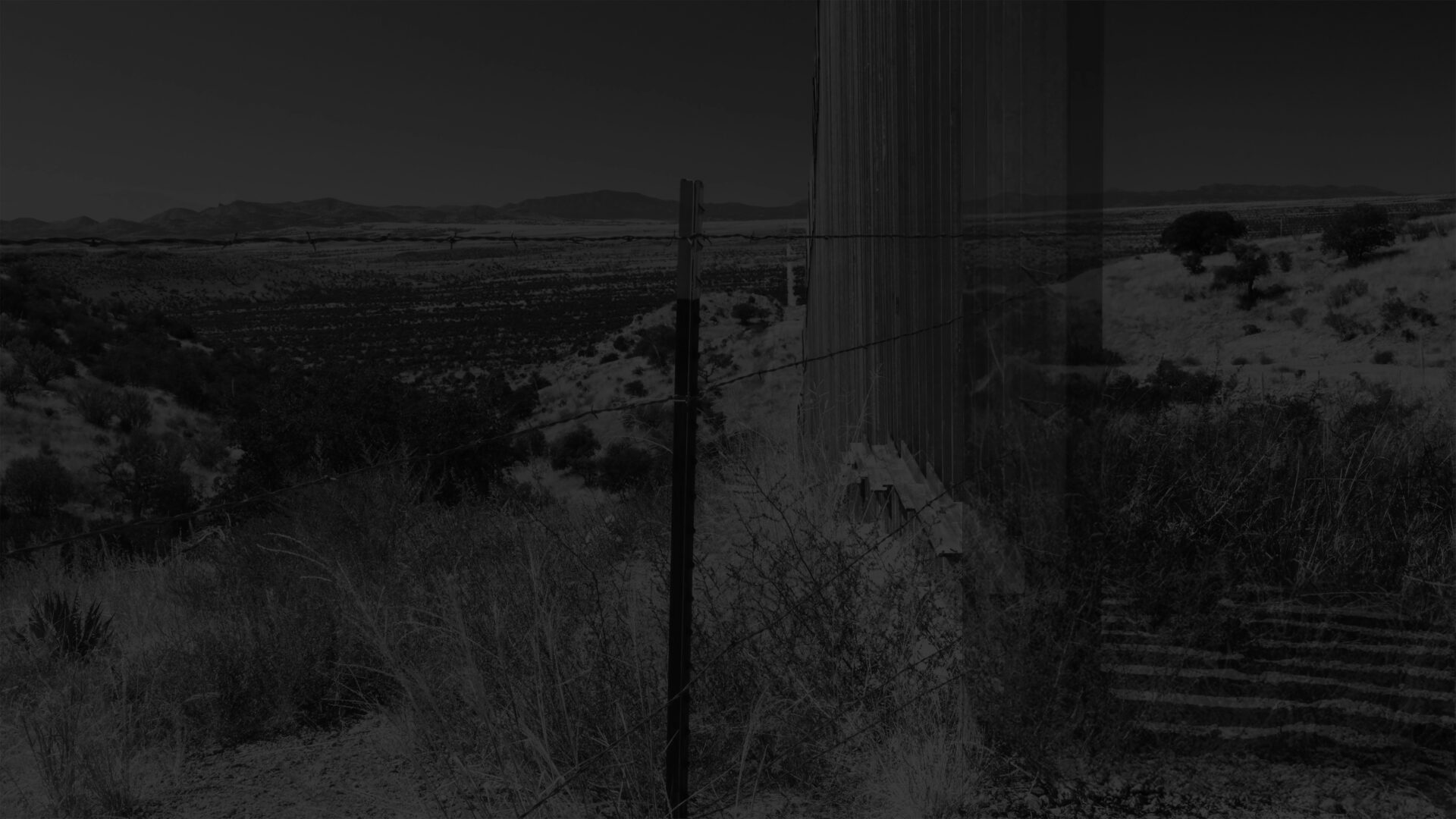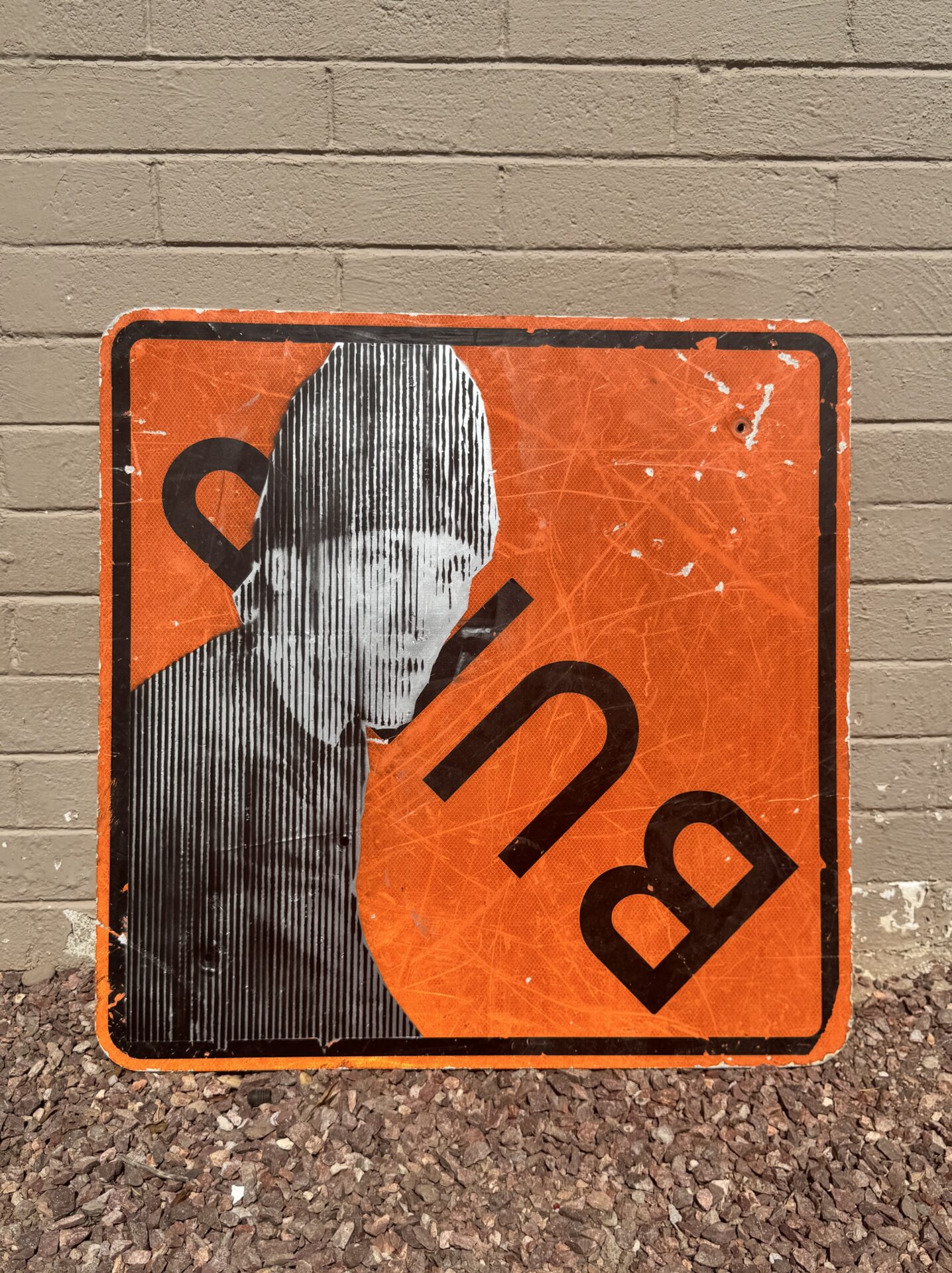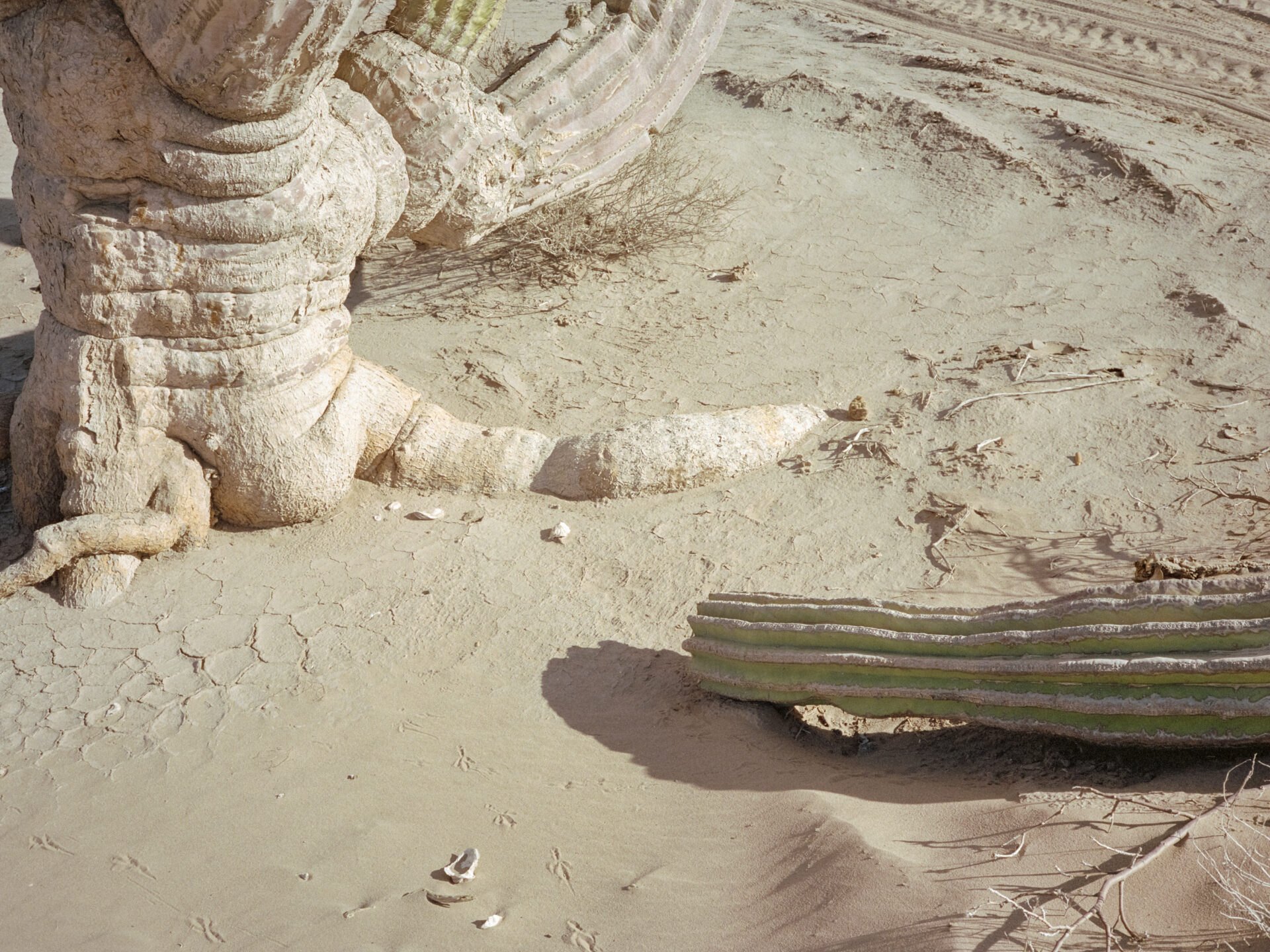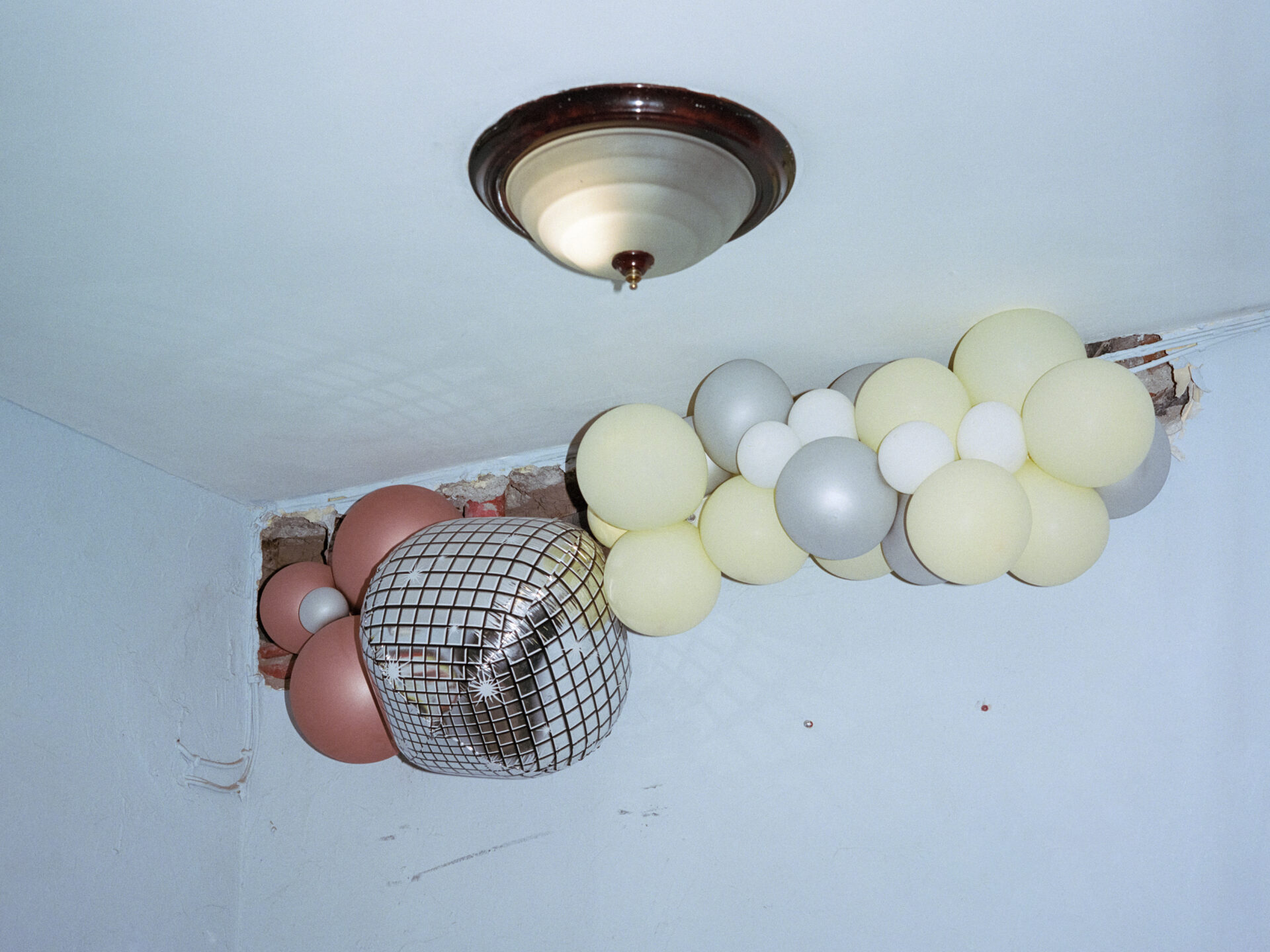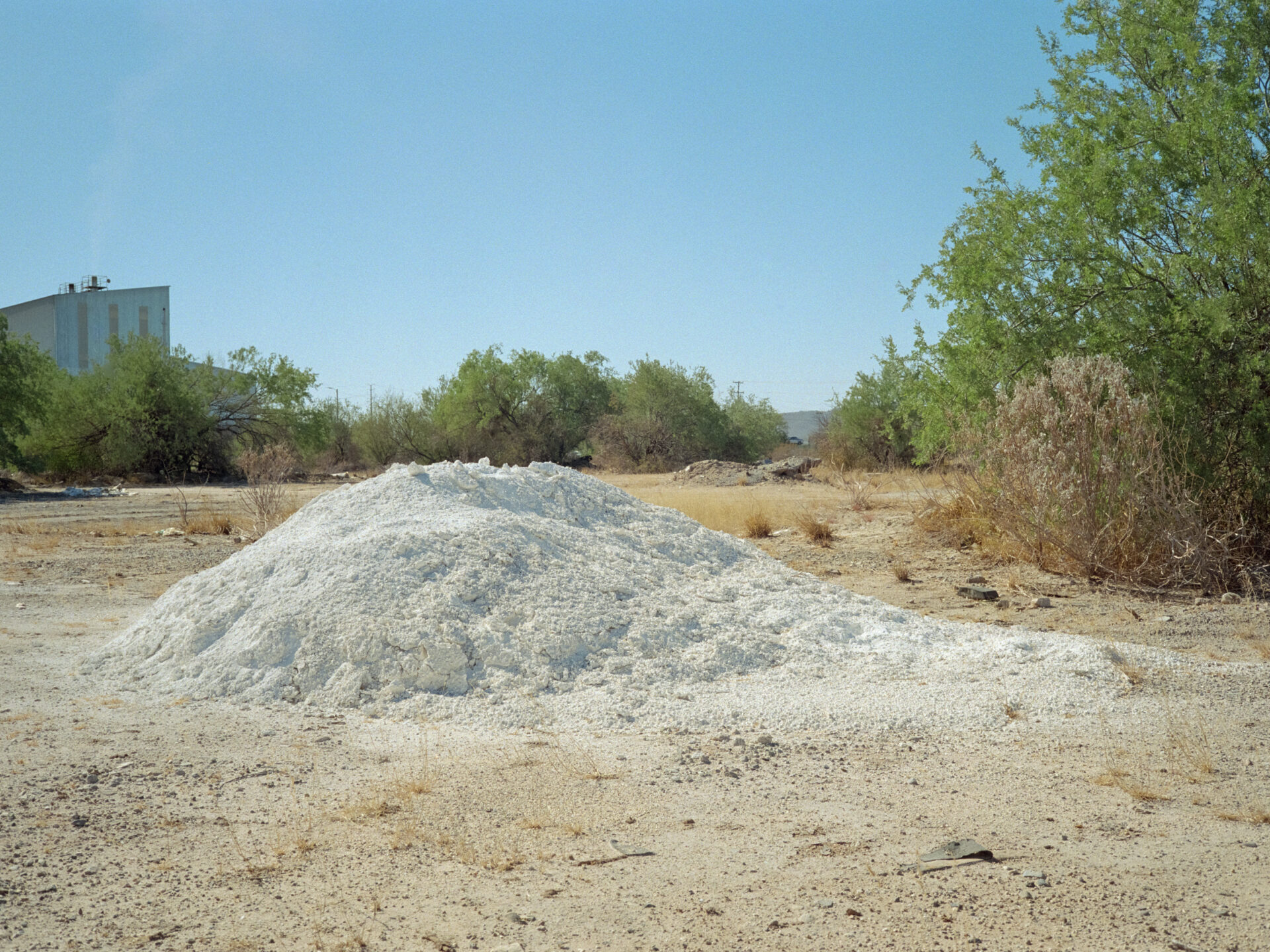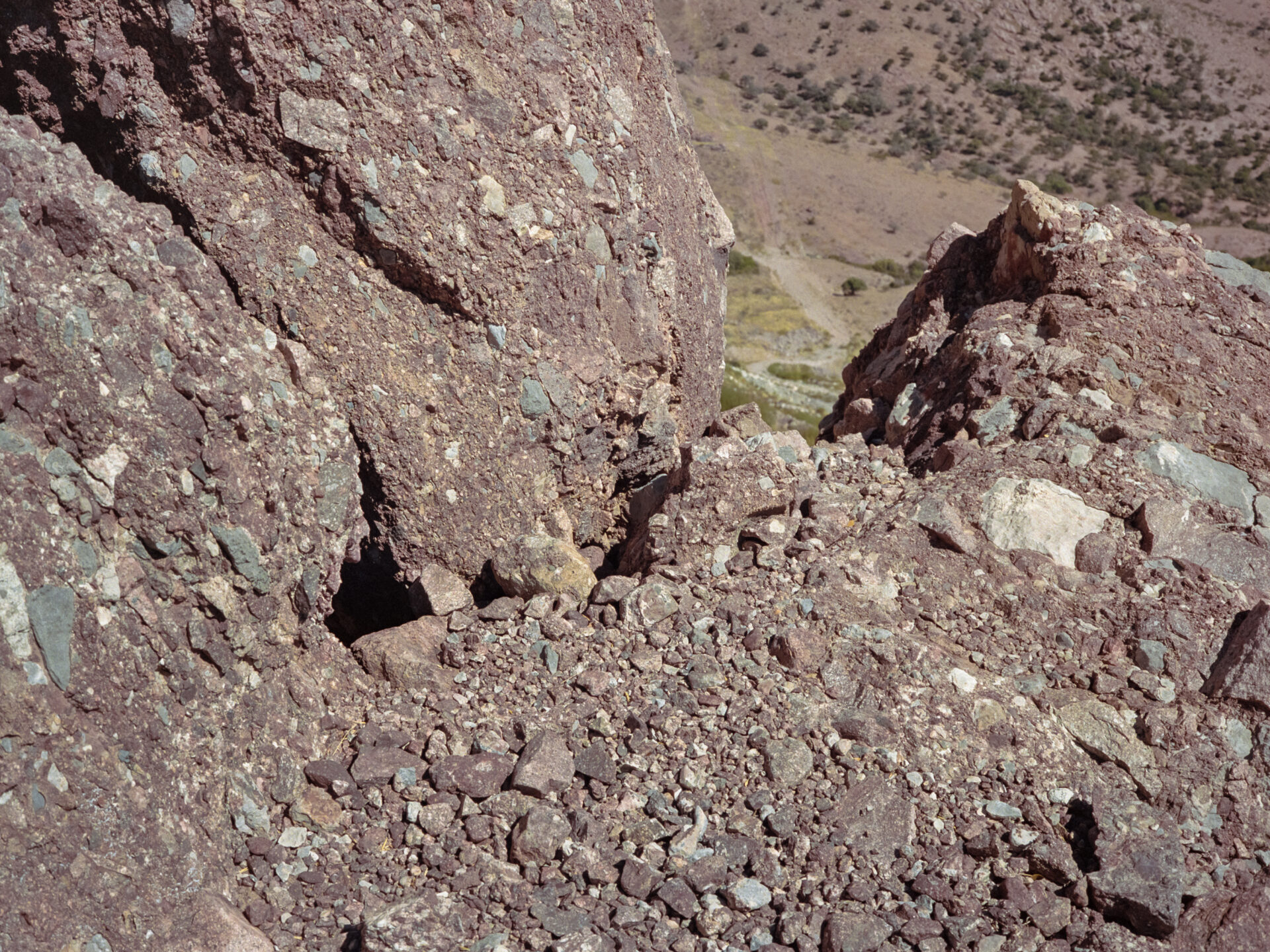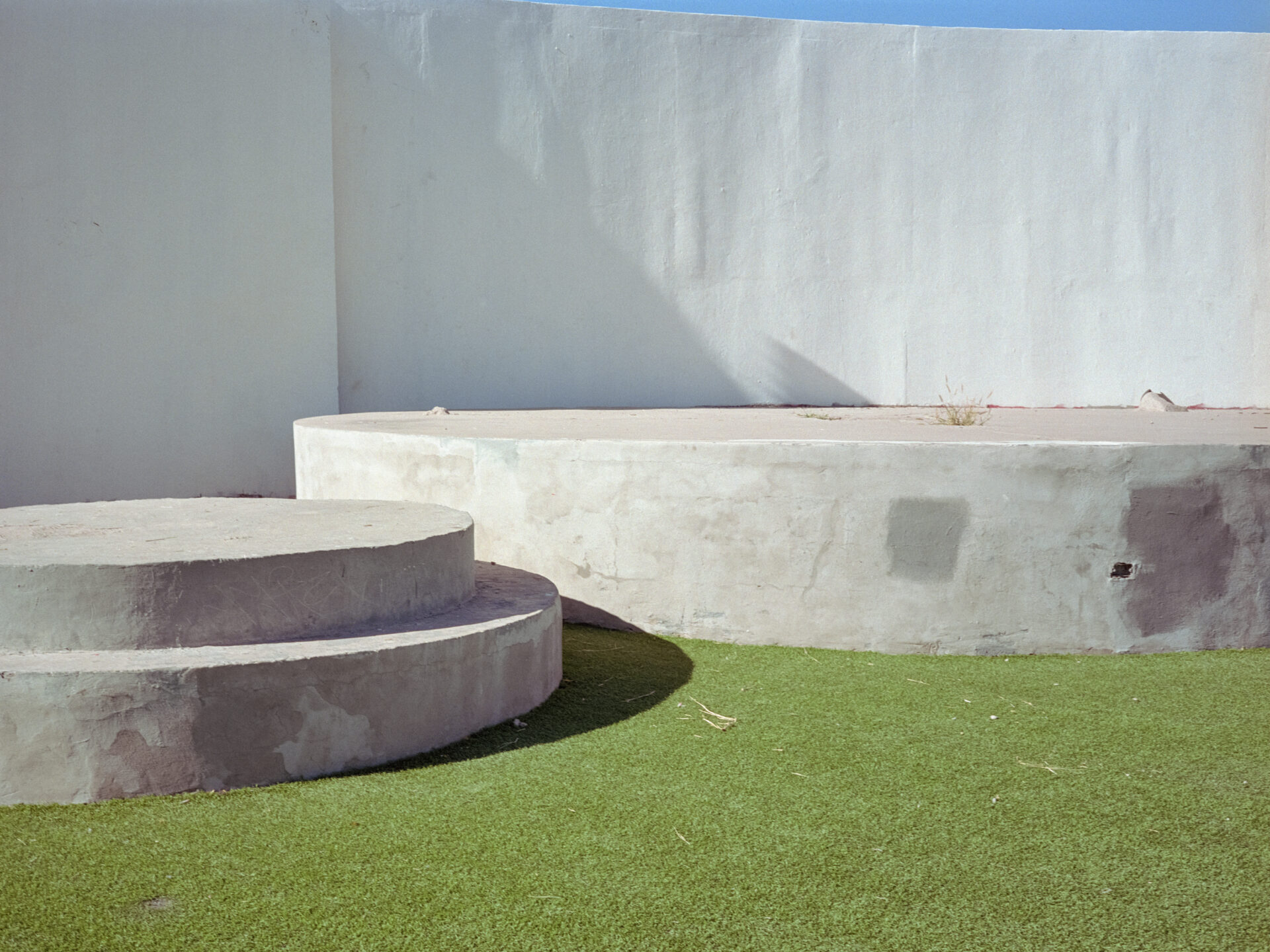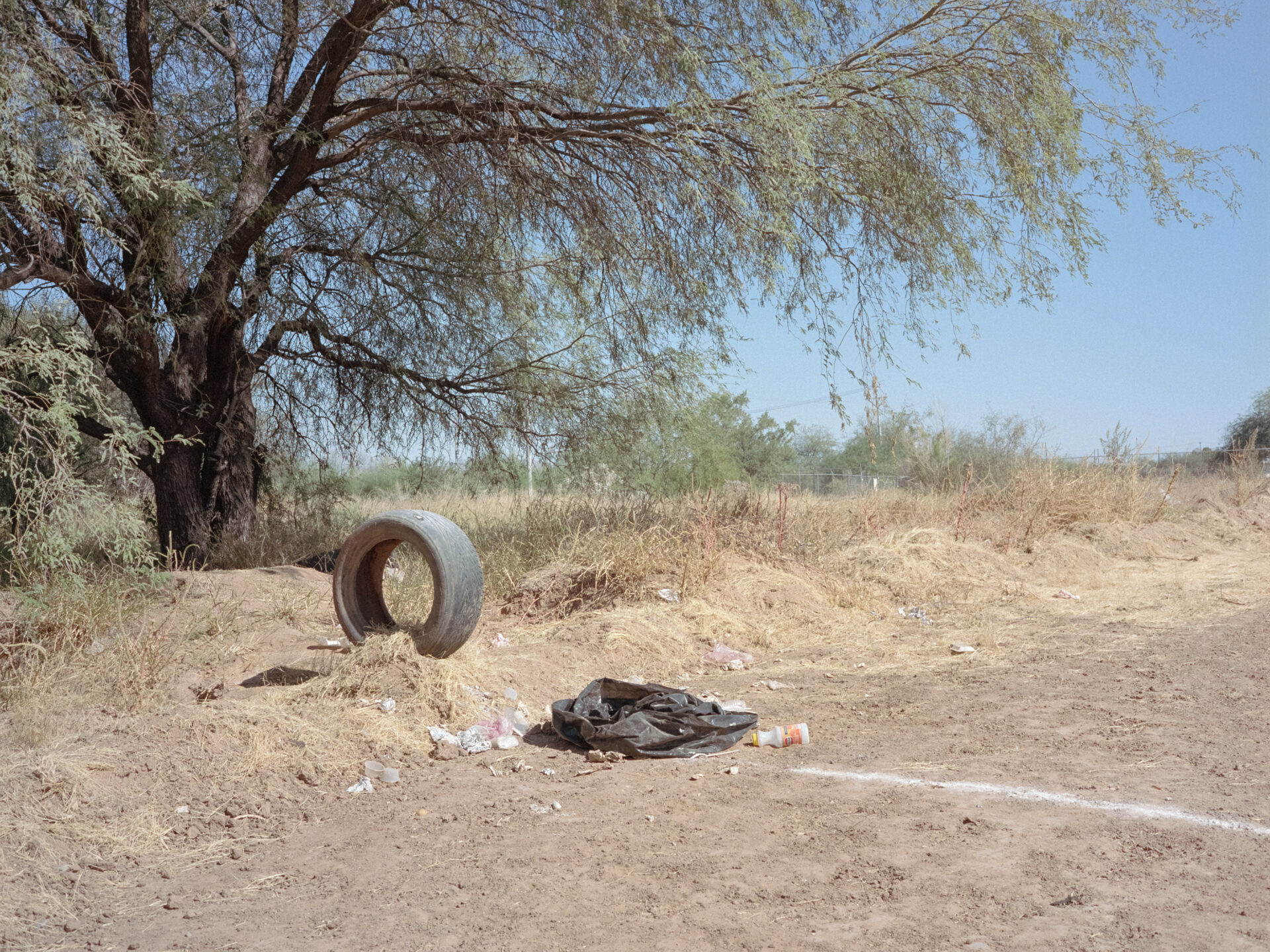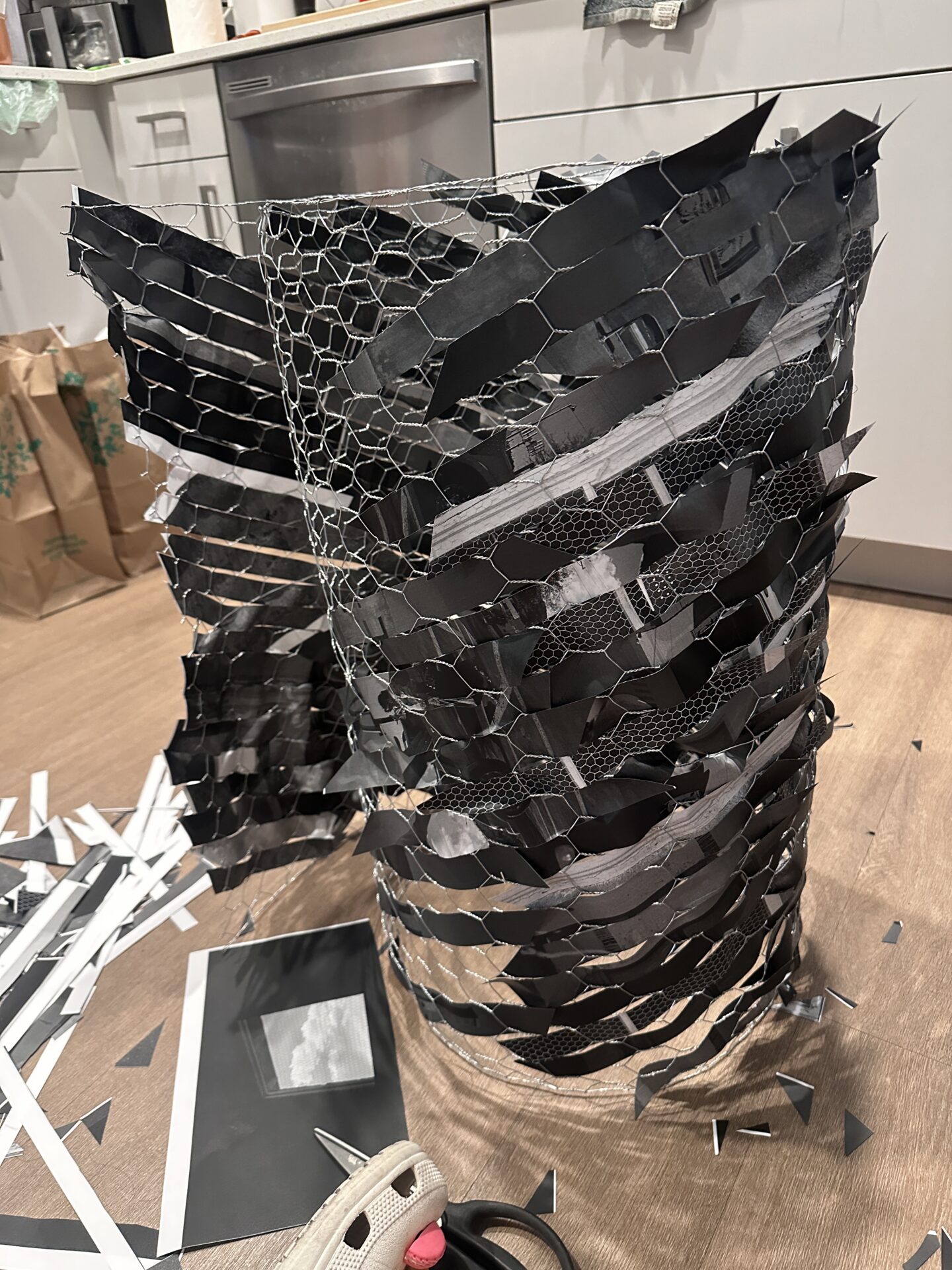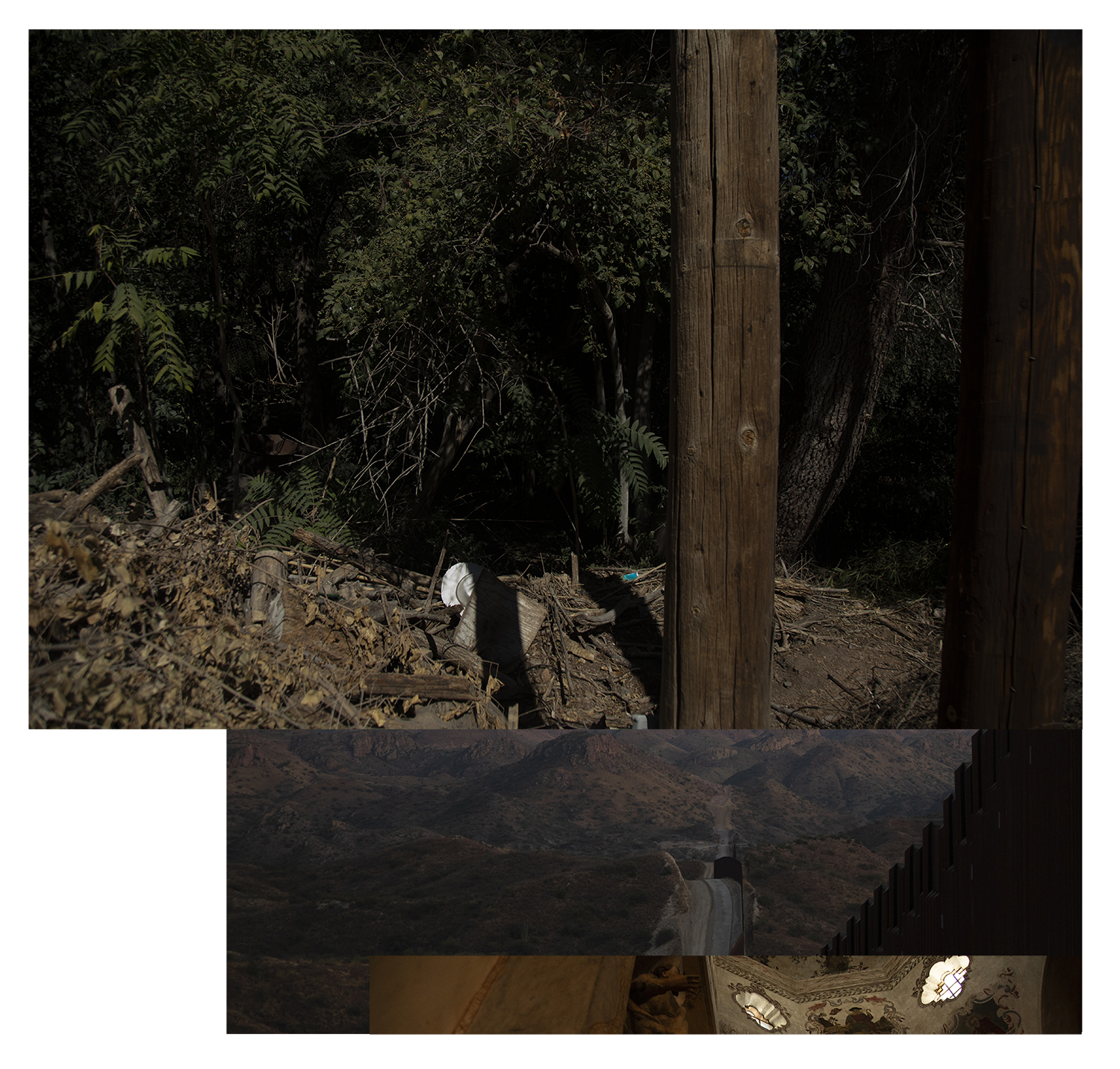BORDER AS NETWORK
OPENING RECEPTION: AUGUST 23rd, 7:00PM
This exhibition presents works by MFA students who participated in the fall 2024 field seminar Border as Network. Organized by David Taylor and the U of A School of Art, the course engaged the Arizona/Sonora borderlands as both a unique regional terrain and a contingent landscape transformed by an array of inputs. Among the most biologically diverse regions in North America and a locus of human habitation spanning millennia, the Sonoran Desert borderlands of Mexico and the United States have changed more in the last two decades than in the previous century.
Border as Network aimed to connect local circumstances of the Tucson, Nogales, Hermosillo corridor and consider that expanded territory as an indicator of global conditions. The itinerary sought to prompt connections across a series of destinations—religious sites, tribal lands, multinational factories, threatened ecosystems, international agribusinesses, sites of resource extraction and contested territory all fed into an arc of experience designed to be catalyst for research and creative production. Against a backdrop of competing, simplified portrayals of the border—during an election year—the central objectives of the course were to bring dimension and context to the this place we call home. Ideally, participants built capacity to navigate the borderlands with an appreciation for complexity and connection. Their work offers an indication of how each of them absorbed their respective experience.
Sites:
San Xavier del Bac Mission
Copper Queen Mine
Camp Naco
Bisbee Mining & Historical Museum
San Rafael Valley Natural Area
Coronado National Memorial
Ambos Nogales
Hermosillo Ford Maquiladora
Universidad de Sonora, Hermosillo
Bahía de Kino Aquaculture
Museo Regional de Sonora
Arivaca
Warsaw Canyon Buffalo Soldiers’ Cemetery
Samaritans Aid Camp at the end of the Border Wall
Borderlands Restoration Network Wildlife Preserve
Esta exhibición presenta obras de estudiantes de la Maestría en Bellas Artes (MFA) que
participaron en el seminario de campo “Border as Network” durante el otoño de 2024. Organizado
por David Taylor y la Escuela de Arte de la Universidad de Arizona, el curso abordó la región
fronteriza de Arizona/Sonora tanto como un territorio regional único como un paisaje contingente
en constante transformación debido a una multitud de factores. Siendo una de las regiones con
mayor diversidad biológica en Norteamérica y un lugar de asentamientos humanos durante
milenios, el desierto sonorense en la frontera entre México y Estados Unidos ha cambiado más en
las últimas dos décadas que en el siglo anterior. “Border as Network” se enfocó en conectar las
circunstancias locales del corredor Tucson, Nogales, Hermosillo y considerar este territorio
expandido como un indicador de condiciones globales.
Este recorrido buscó generar conexiones a lo largo de una serie de destinos —sitios religiosos,
tierras tribales, fábricas multinacionales, ecosistemas amenazados, agroindustrias internacionales,
lugares de extracción de recursos y territorios en disputa— que, en conjunto, conformaron un
marco de experiencias diseñado para ser un catalizador para la investigación y producción
creativa. En un contexto de simplificación de representaciones contrapuestas de la frontera —
durante un año electoral—, los objetivos principales del curso fueron el de aportar dimensión y
contexto a este lugar que llamamos hogar. Idealmente, los participantes desarrollaron la capacidad
de recorrer la frontera con una apreciación por complejidad e interconexión. Este trabajo ofrece
una muestra de cómo cada uno de ellos recibió e interpretó la experiencia vivida.
Sitios:
Misión de San Xavier del Bac
Copper Queen Mine
Camp Naco
Bisbee Mining & Historical Museum
San Rafael Valley Natural Area
Coronado National Memorial
Ambos Nogales
Maquiladora Ford, Hermosillo
Universidad de Sonora, Hermosillo
Bahía de Kino Acuicultura
Museo Regional de Sonora
Arivaca
Warsaw Canyon Buffalo Soldiers’ Cemetery
Samaritans Aid Camp al final del mundo fronterizo
Borderlands Restoration Network Wildlife Preserve
Andrés Caballero
Coming from Mexico City but based in Tucson, Arizona, my research explores the complex realities of migration, surveillance, and marginalization across the US/Mexico border. I interrogate dominant narratives imposed by mass media and institutions, asking how visual technologies are designed for control, and how they can be reclaimed to foster agency and social justice. Through ethnographic research and constant travel along the borderlands, I aim to present these regions as places of community and cultural heritage. As a native Spanish speaker, I build these projects in collaboration with the Latinx community of Arizona, prioritizing public presentations in non-institutional spaces. I am currently a third year MFA candidate in Photo, Video & Imaging at the University of Arizona.
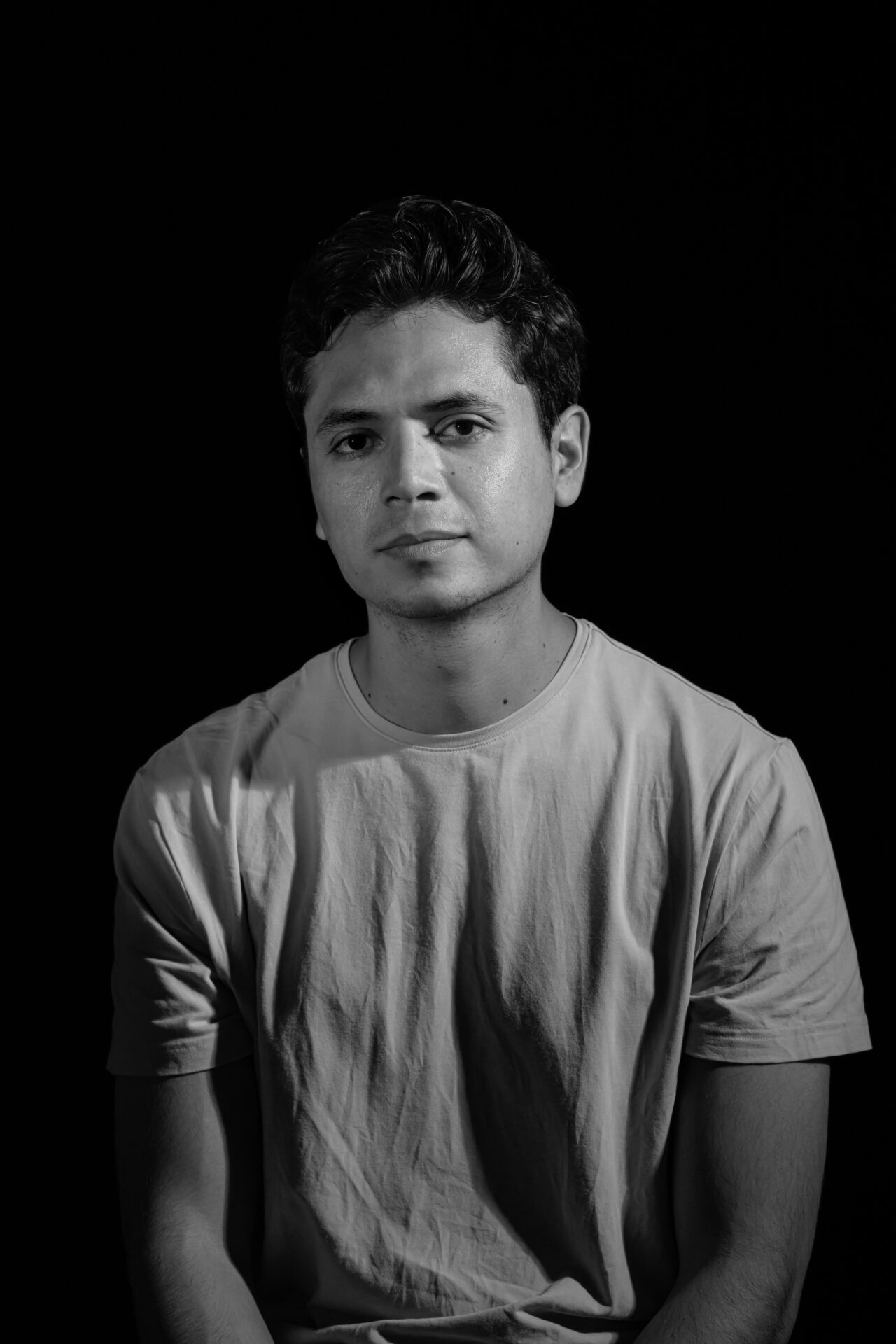
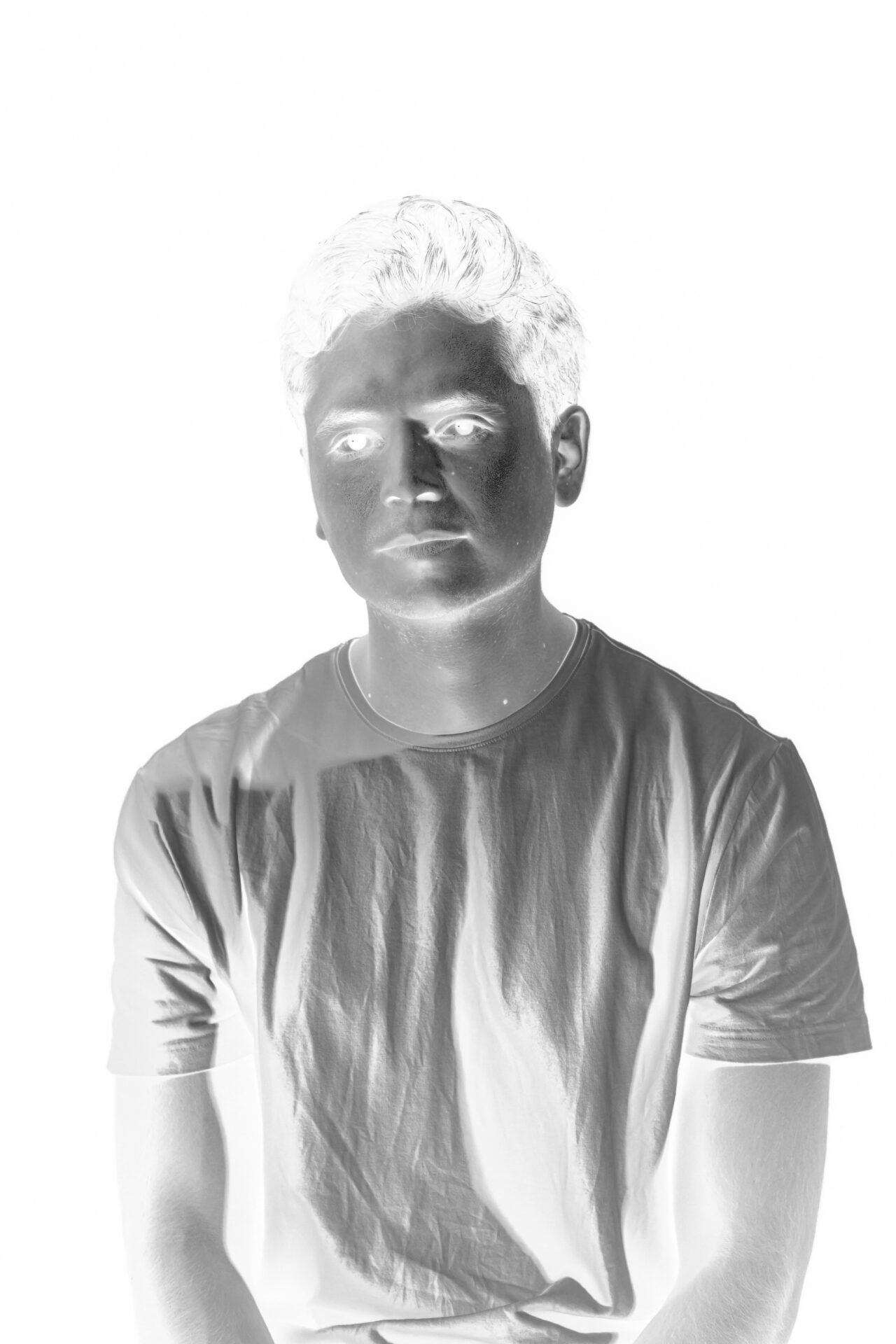
Beihua Guo
Beihua Guo (b. 1998, Shanghai, China) is a visual artist working in photography, video, and installation. He holds a BA in Studio Art and Environmental Analysis from Pitzer College (home to the Tongva) and is pursuing an MFA in Photography, Video, and Imaging at the University of Arizona (home to the O’odham and the Yaqui). His work investigates how histories are remembered, buried, or erased, particularly in landscapes marked by colonialism, extraction, and displacement. He is a recipient of the John Goto Prize, the Lucie Foundation Emerging Scholarship, the TOP20·2025 Contemporary Chinese Photography award, the Kurt Markus Photography Scholarship Fund, and the Janie Moore Greene Scholarship Grant. He received an Honorable Mention for the Lenscratch Student Prize and was named a finalist for the Aftermath Grant, Photolucida’s Critical Mass, the OD Photo Prize, the BarTur Photo Award, the Three Shadows Photography Award, and the PDNedu Student Photo Contest. His work has been exhibited internationally at venues such as the Three Shadows Photography Art Centre, the Royal Photographic Society, Cleve Carney Museum of Art, Photo Beijing, Photo Open Up International Photography Festival, Space Place, and Nizhny Tagil Museum of Fine Arts, among others. He has participated in artist residencies at Petrified Forest National Park, Lassen Volcanic National Park, Yellowstone National Park, Yangshuo Sugar House, and Sunyata Hotel Wuli Village.
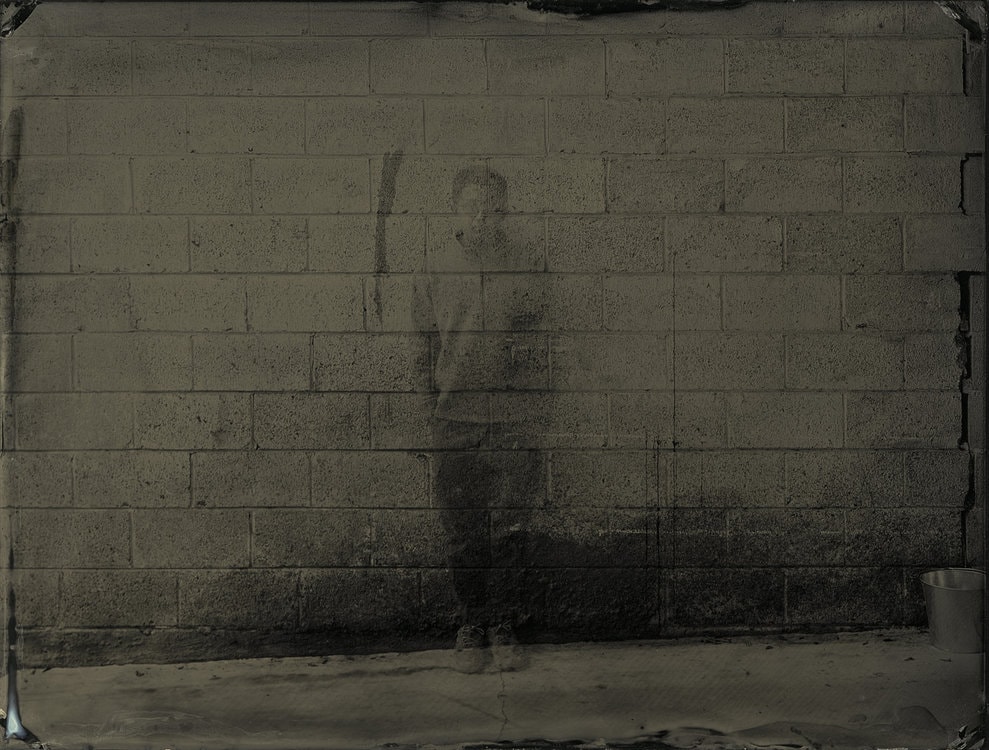

Porter McDonald
Porter Norton McDonald is an MFA student in Illustration/Design/Animation at the University of Arizona. His current work includes public murals, sequential art, reductive linocut printmaking, photography, and most recently, creative nonfiction.
After completing an undergraduate degree in Photography at the University of Arizona, he moved to New York City to work in film and television. Since returning to Tucson, he has worked as an artist and educator and gained his first master’s degree in Art and Visual Culture Education. Porter has created a murals throughout Southern Arizona including one in the neighborhood of Pueblo Gardens for which he was awarded the Mayor’s Community Service Award.
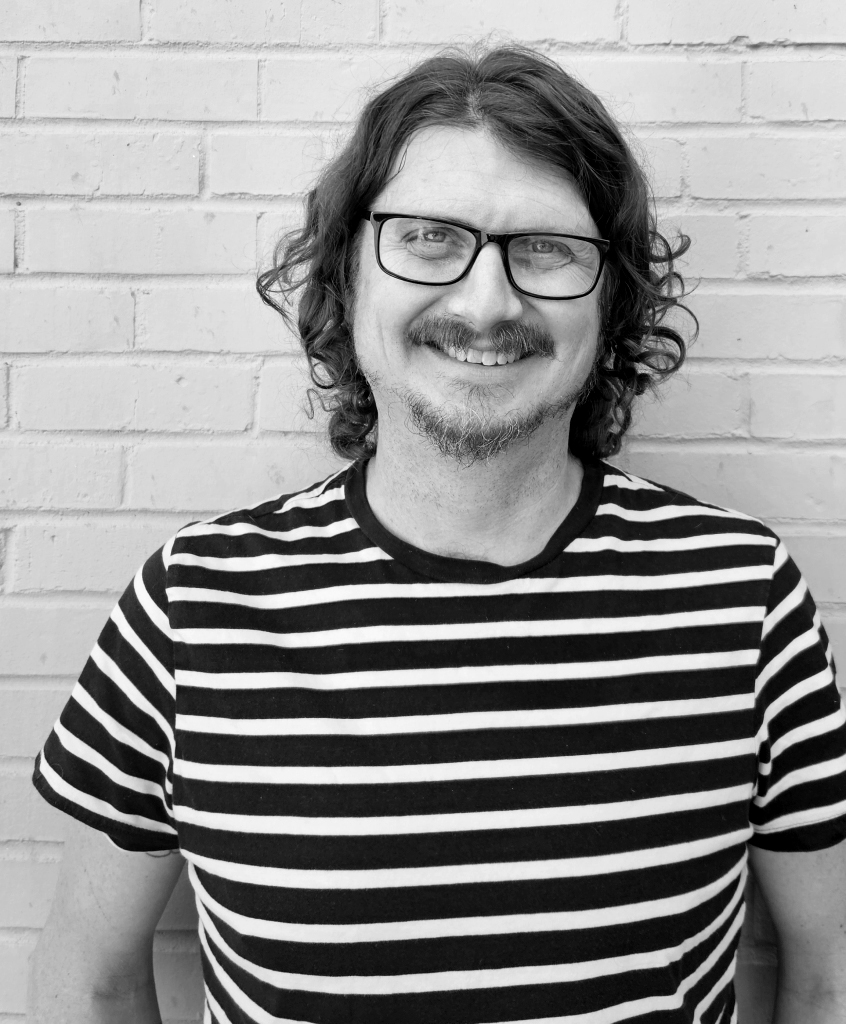
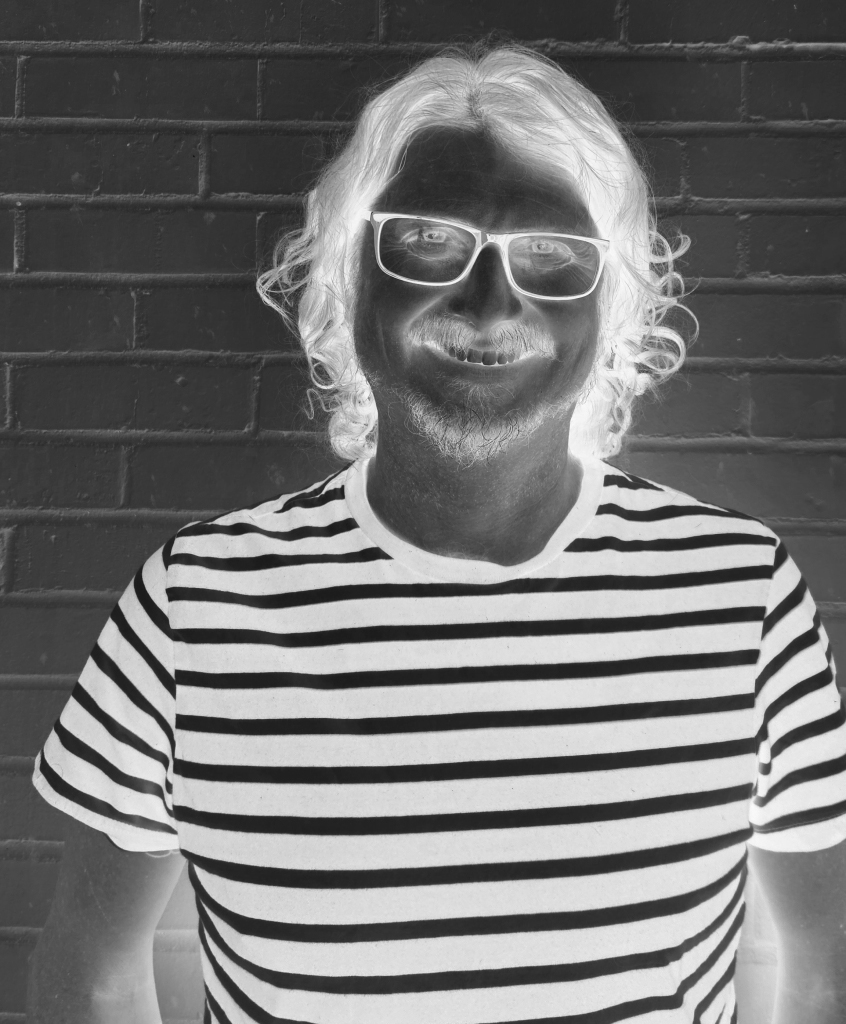
Camille Trautman
Camille is an artist and photographer based in Seattle and Tucson. A member of the indigenous Duwamish Tribe, Trautman is interested in how people project their idea of landscape onto the world.
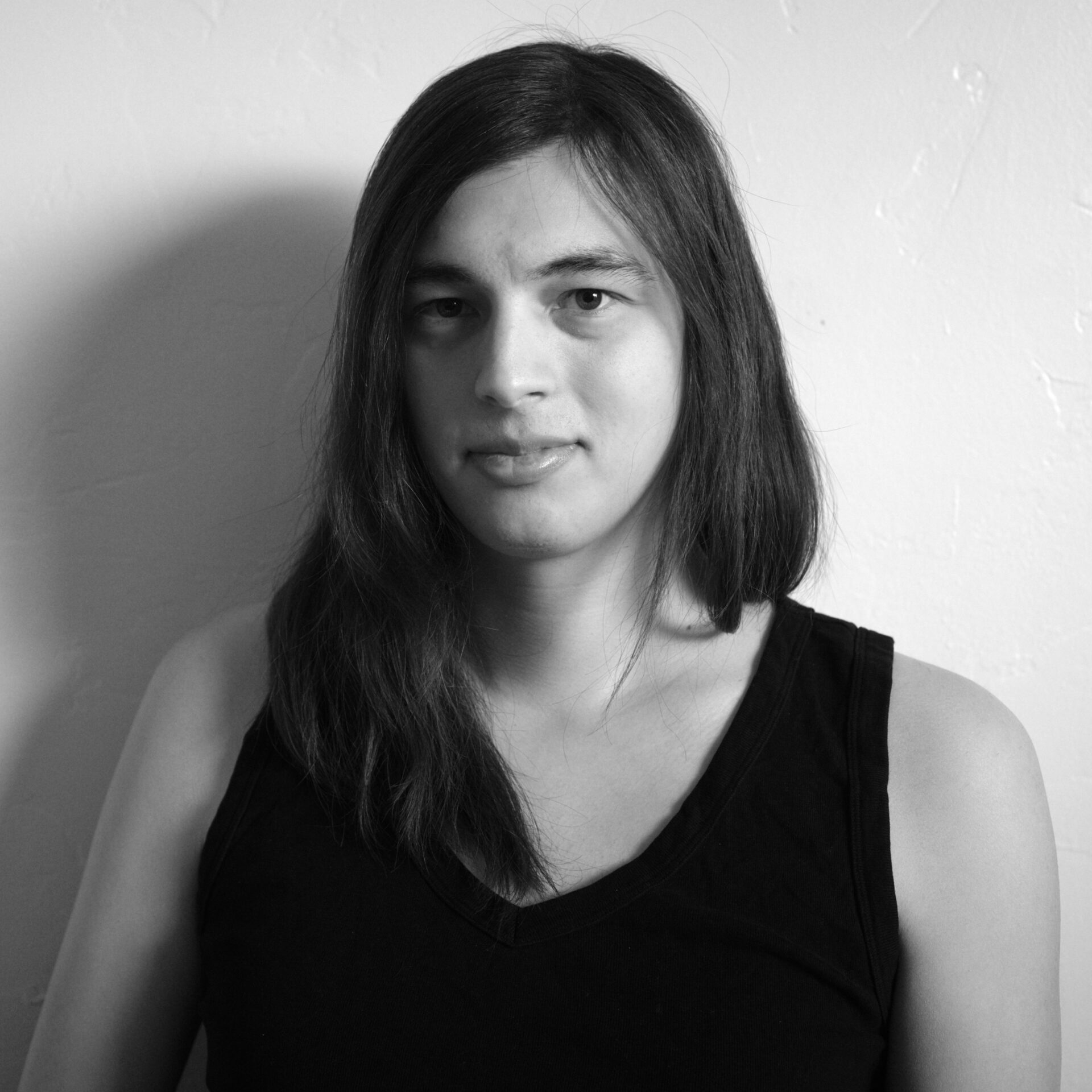
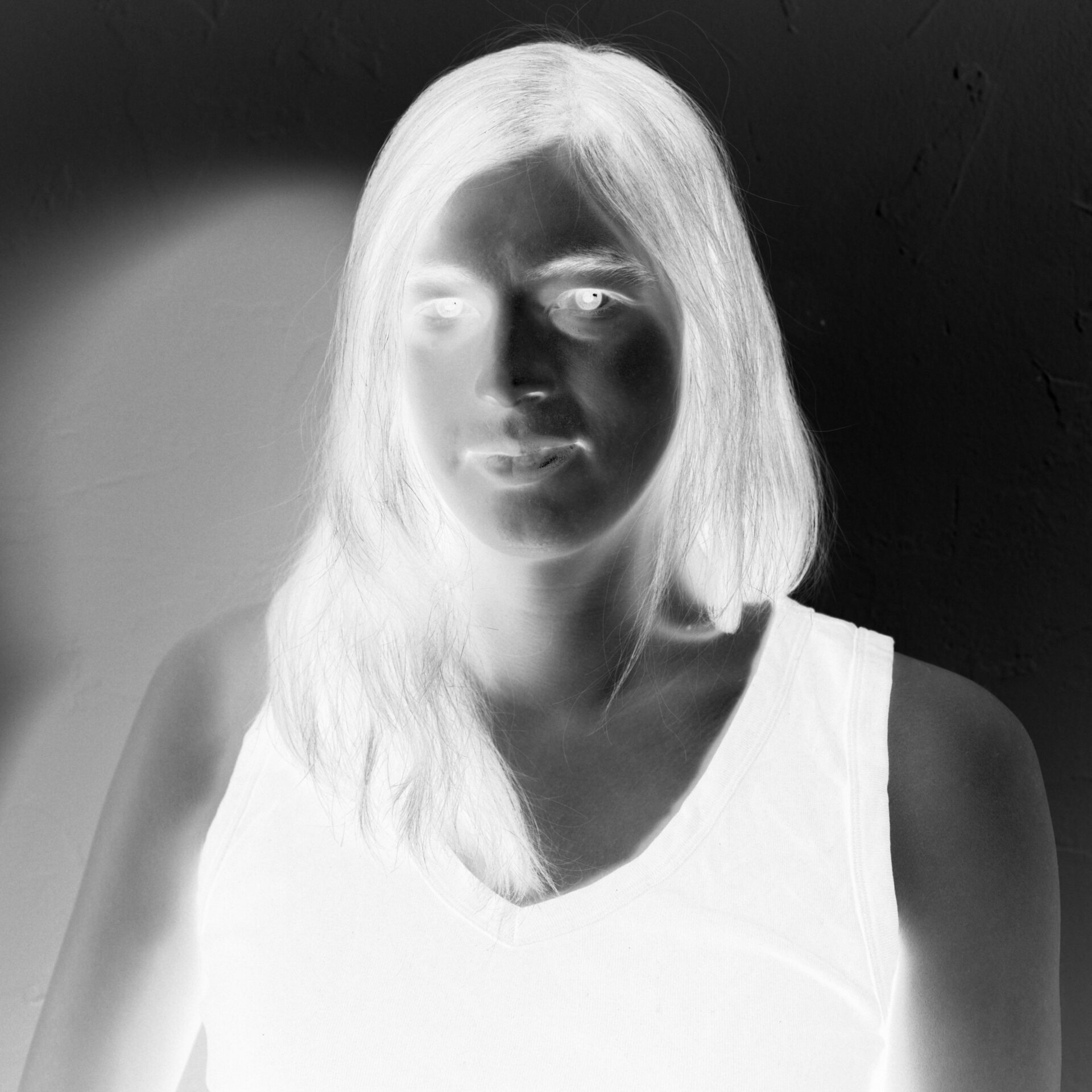
Alexis Joy Hagestad
Alexis Joy Hagestad (she/they) was born and raised in Missoula, Montana, which is located on the traditional lands of the Salish, Kootenai, and Kalispel people. As a child, she believed she lived on half of the Earth because of the vastness of the sky. She is an
interdisciplinary artist whose work in sculpture, lens-based media, and multispecies collaboration investigates the impact of human activities on the planet. Her practice often emphasizes overlooked narratives of different species. By exploring ecological grief, Hagestad examines the interconnectedness of all living beings. Her work aims to challenge conventional human perspectives and envisions a future that transcends catastrophic environmental narratives. Through listening to and learning from multispecies communication, Hagestad’s research aims to examine and advocate for a more sustainable coexistence with all inhabitants of Earth.
Alexis holds a B.F.A. in Photography from the Savannah College of Art and Design (SCAD) and is currently an MFA candidate in Photography, Video, and Imaging (PVI) at the University of Arizona in Tucson, Arizona, which is on the traditional lands of the
O’odham and Yaqui peoples.
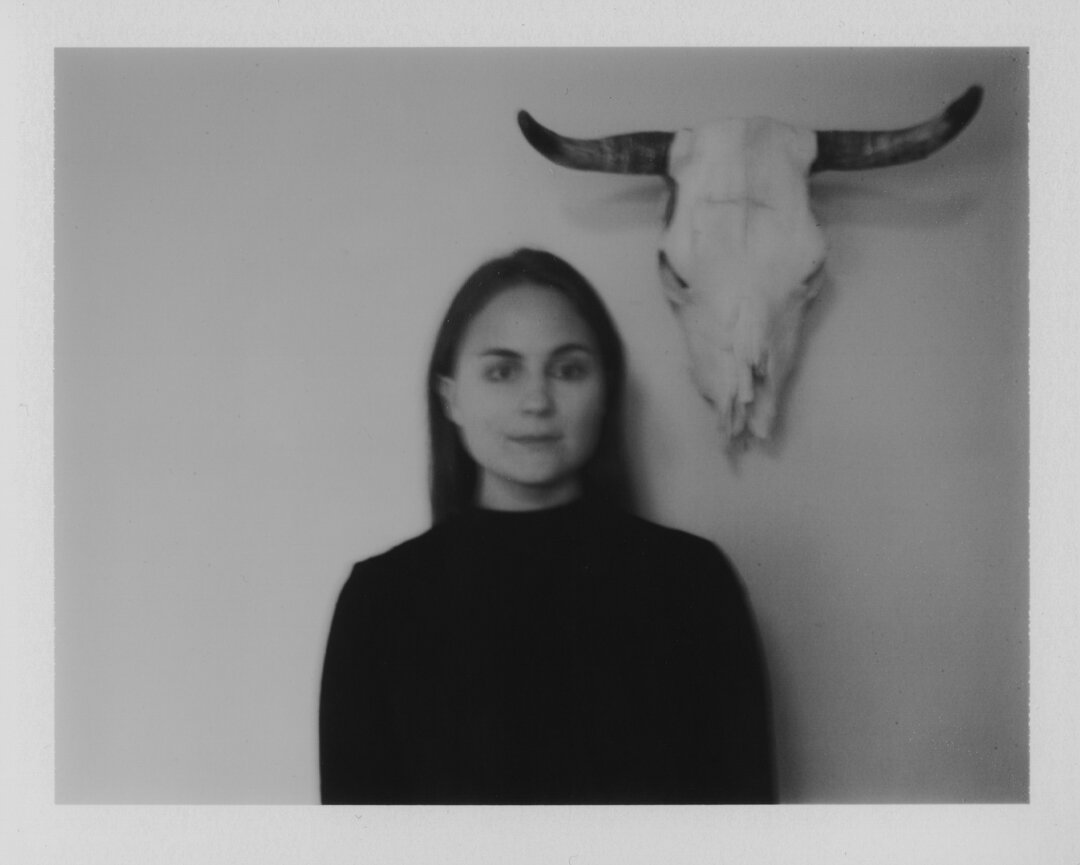
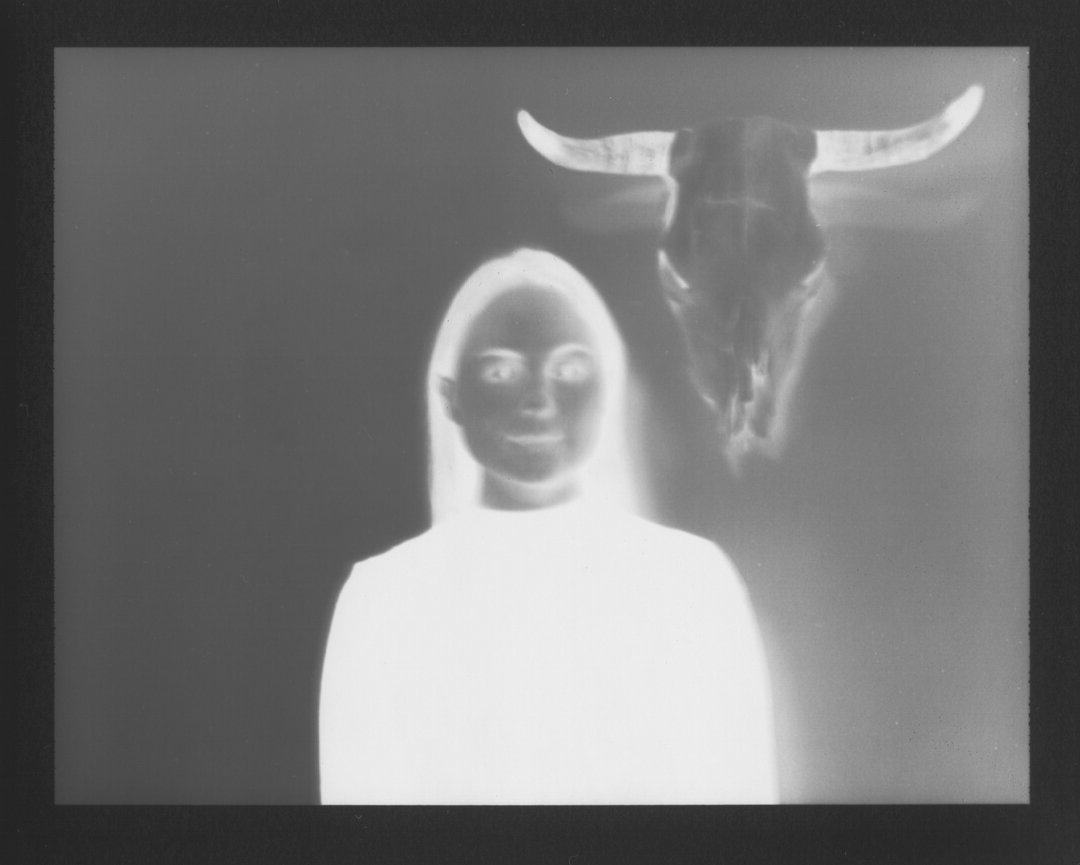
Eden Squires
My work explores the tension between control and agency, decay and regeneration, past and future. Rooted in sculpture and expanded through digital tools, fabrication techniques, and public engagement, I build objects and environments that question how identity, memory, and resistance take shape—especially within overlooked or constrained spaces.
I often work with recycled metals, cast concrete, found technology, and code—materials that carry the imprint of use and obsolescence. These fragments are reassembled into hybrid forms: part-human, part-machine, part-archive. Whether through kinetic installations, wearable pieces, or skateboardable public sculptures, I’m drawn to the point where physical and digital, organic and industrial, collide. My practice is influenced by my background in maker spaces, my experience as a skateboarder, and my connection to intergenerational trauma and cultural erasure.
Underlying all of my work is a desire to open up space—both literal and conceptual—for participation, disruption, and reimagining. I see art not as a finished object, but as a site for movement, dialogue, and shared experience.
Based in Tucson, Arizona, I am currently taking my graduate degree in 3DXM (3-Dimensional Digital Media) at the University of Arizona, College of Fine Arts.


Benjamin Davis
Ben Davis is a visual artist working with photography, video, and the artist book form. Ben has participated in residencies in Finland (Arteles Creative Center, 2018), Iceland (Fish Factory, 2018), and Spain (Casa Tagumerche, 2018). He has also shown in the United States at The Center for Fine Art Photography (Fort Collins, CO) and internationally at Millepani Gallery (Rome, Italy).
In Ben’s practice, he recontextualizes images from his family’s archive through media transformations (video) and re- presentations (cyanotypes) of source material. The family archive enmeshes with his photographs to create a new space for visual communication.
He holds a BFA in Fine Art Photography and a BS in Biomedical Photography from Rochester Institute of Technology. He currently resides in Tucson, AZ, where he has just completed his MFA program at the University of Arizona.
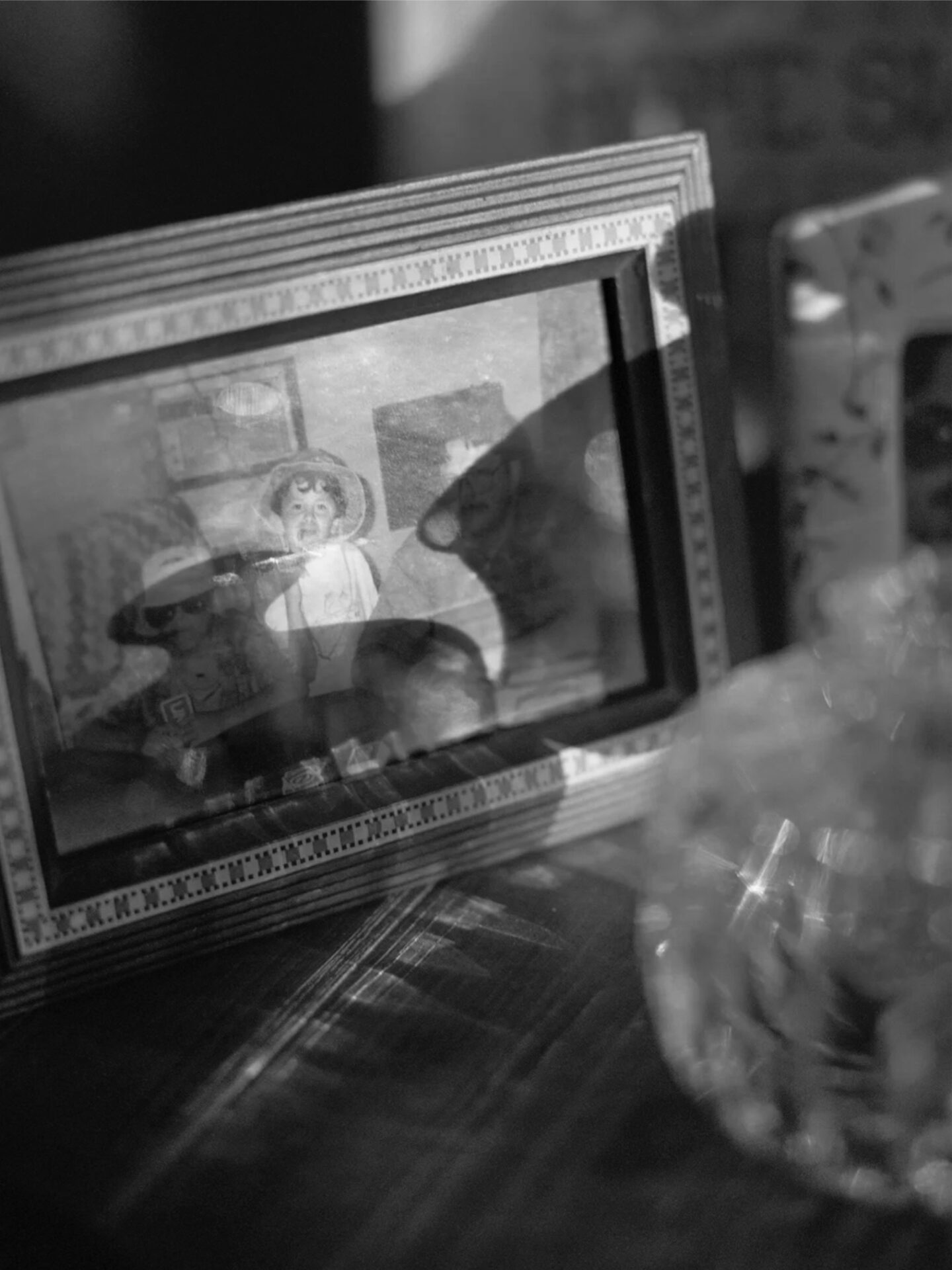
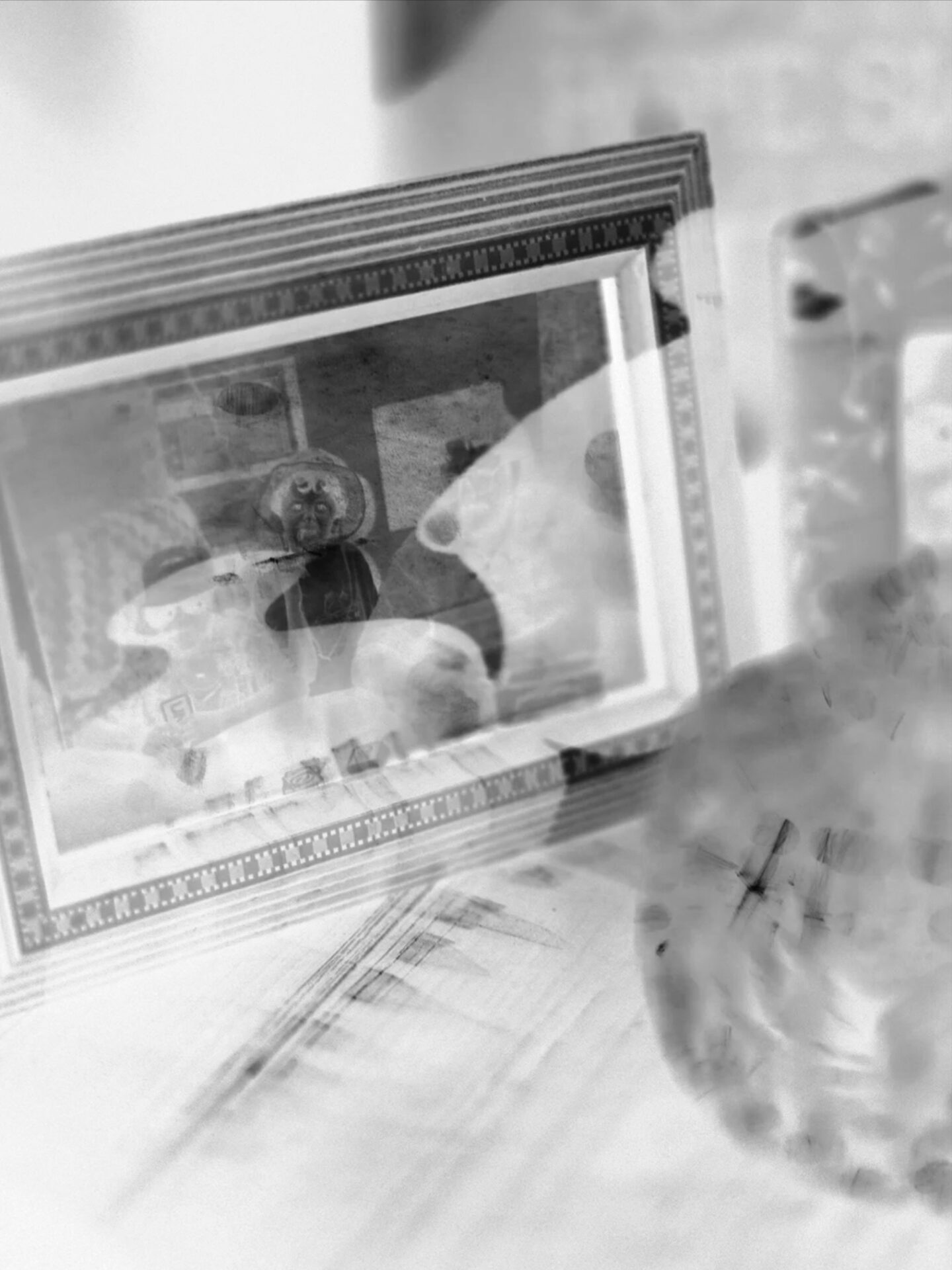
Lu Zheng
Lu holds a Master’s degree in New Visual Arts from the Florence Academy of Fine Arts. She is a curator and artist whose work has been showcased in international exhibitions. Her writings have been published in Chinese newspapers and online media. Her artistic practice spans sculpture, installation, photography, and performance art. Academically, she focuses on contemporary participatory art and theater in China.

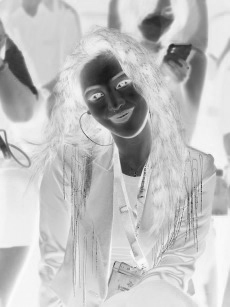
Semoria F. Mosley
South Carolina is home but I’m in Arizona.
I interrogate the relationship between habit and habitat through vehicles of shared memory. My curiosity leads me to traditional media techniques and contemporary image-making. Using practice-based research to explore the complexities of culture, identity, and environments within African diaspora communities, I focus on uncovering daily nuance and mysticism of Black Americans in the Deep South.
A combination of video, sound, performance, and photography is used to instigate familiarity through contextual difference. As a means of nontraditional collaboration, the work I share relies on empowering individual agency through experimental recollection and cultural code reconstruction. Inspired by what is ritual, routine and diaristic, when viewed through a communal lens, where do the remnants of colonization reside within myself and everyone else?
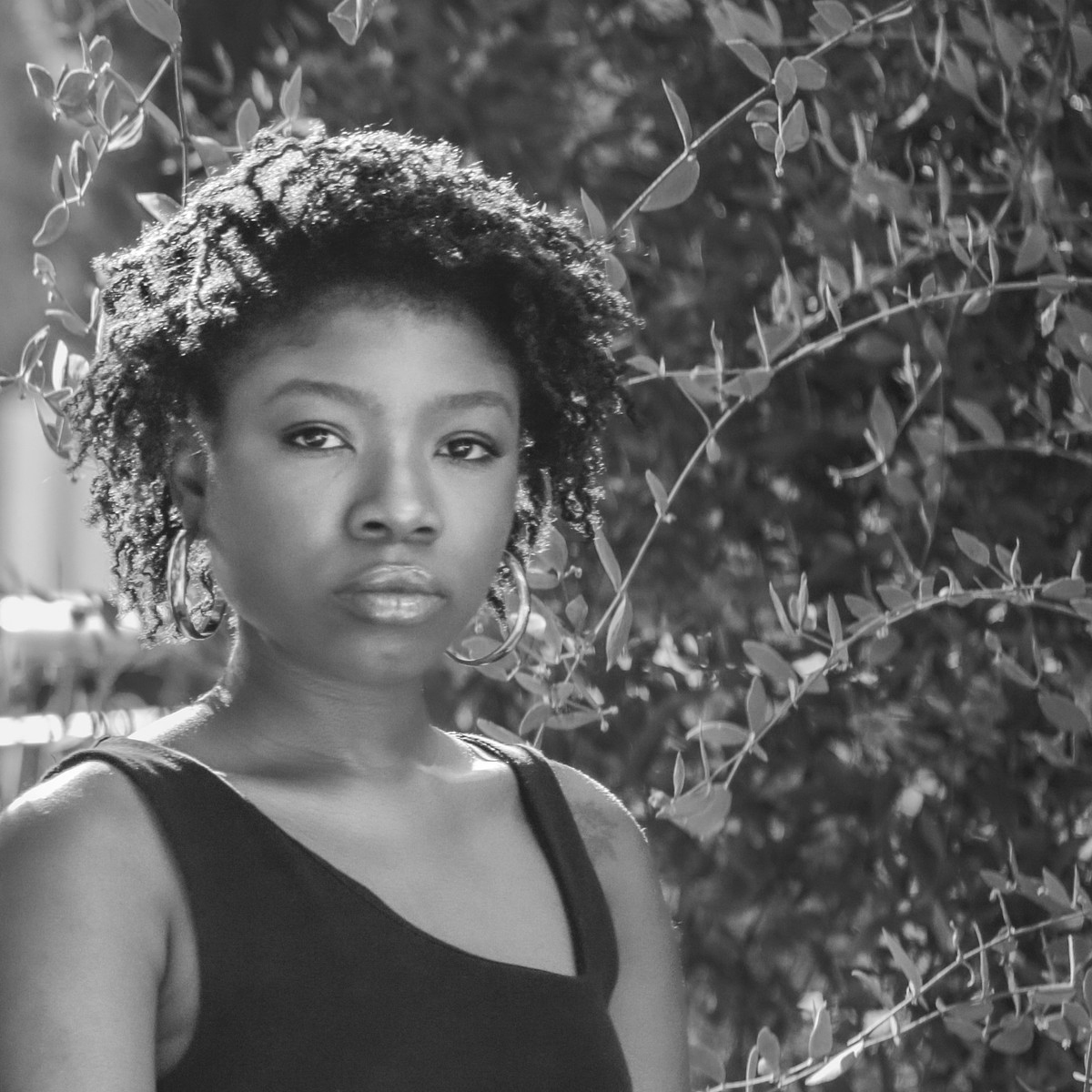
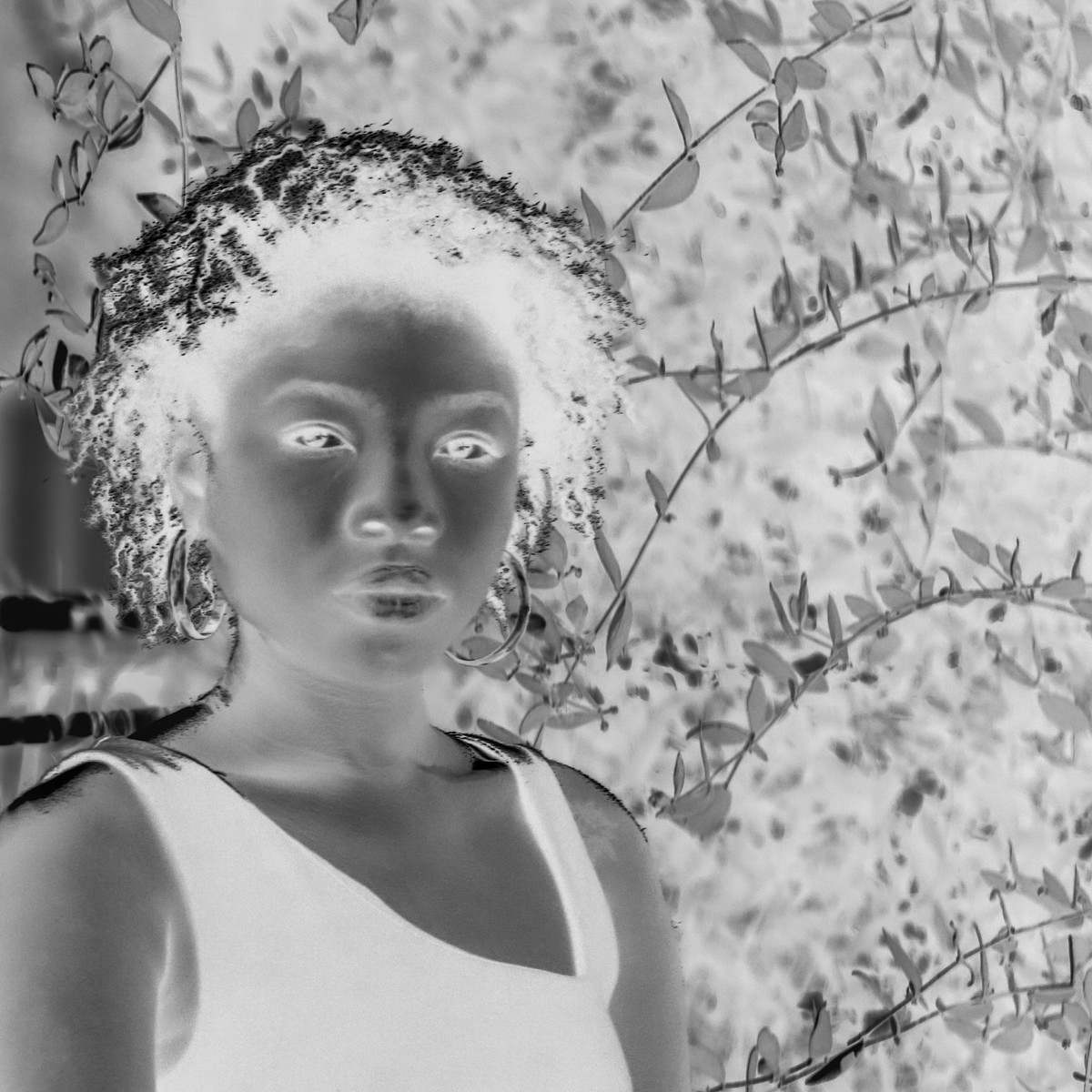
Maya Jackson
Maya Jackson is a multidisciplinary artist exploring the relationship between humanity and environment through photography, video, and poetry. Born and raised in Richmond, VA, her work reflects the internal and external landscapes of her experience as a Black woman, drawing from both personal and generational memory. Emphasizing the textures of body and land, she examines how these elements connect, fragment, and shape identity. Through her practice, Jackson resists colonial narratives and interrogates human intervention in shared spaces, visualizing liberation from an imposed realism that stems from systematic oppression.
She holds a BFA in Photography and Film from Virginia Commonwealth University School of the Arts (VCUarts) and is currently pursuing her MFA at the University of Arizona.
